Mike Duran's Blog
October 15, 2025
‘Cozy Horror’ and the Aestheticization of Doom
Most trace the origins of “cozy fiction” to the emergence of “cozy mysteries.” Emily Martin writes, “Cozy mysteries are still a fairly recent development in the mystery genre. The term ‘cozy mystery’ was coined in the late 20th century at a time when contemporary writers were trying to recreate the feel of the mystery novels from the Golden Age of Detective Fiction.” Tirzah Price adds, “The cozy mystery genre has its roots in early 20th century British mysteries (think Agatha Christie and Dorothy L. Sayers)… and as a response to the hardboiled crime fiction that became popular in the U.S. in the mid-20th century.” So “cozy fiction” was both an attempt recreate the classic “whodunits” of the Golden Age while also distancing itself from the grittier, hardboiled noir of the postwar era.
The contemporary “cozy mystery” genre is incredibly popular. A search for the term on Amazon lands over 60,000 results. In fact, the “cozy” genre has spawned numerous subgenres. For example, now you can find subgenres of “cozy romance,” “cozy fantasy,” “cozy westerns,” and even “cozy science fiction.”
So what is “cozy fiction”? Author Karen Cioffi notes several features of “cozies,” as they are oft-called. The books exude “comfort, warmth, and light-heartedness.” They transport readers “to peaceful settings” and offer storylines “that emphasize community, simpler times, and emotional resolution.” These stories offer “nostalgia and simplicity,” and provide “escapism” and “finding relief.”
She concludes:
In an unpredictable world, cozy literature’s structured and predictable narrative style is soothing. Readers know what to expect: a slow, leisurely build-up, a connectable-to protagonist, and a satisfying resolution.
There’s a kind of security in knowing that everything will work out in the end; it’s quite the contrast to the often unresolved, cliff-hanging nature of modern news or the unpredictability of life itself.
This predictability, where everything will fall into place, provides a sense of control and stability for readers.
Which brings us to the latest iteration of cozy fiction — “cozy horror.”
At first glance, the very nature of cozy storytelling appears antithetical to the horror genre. Horror is rarely characterized by “comfort, warmth, and light-heartedness.” Readers of the genre are not looking for “peaceful settings” nor “finding relief.” Not only are horror tales often “unpredictable,” there’s no guarantee that “everything will work out in the end.” Nevertheless, despite these dissimilarities, “Horror” is the latest iteration of the “cozy” genre.
At first glance, the very nature of cozy storytelling appears antithetical to the horror genre.
So what is “cozy horror”?
Well, this is where things get sticky.
A recent episode of the horror podcast, Books in the Freezer, describes cozy horror as having “spooky elements,” but also being “low stakes” and knowing you’re going to have “a happy ending.” Or as the Porter House Review puts it, cozy horror is fiction which follows the general conventions of the horror genre but “with a happy ending, or low stakes…or even if the stakes are big, it’s surrounded by humor, or a love interest, or things that kind of negate those big stakes.”
In her article on the subject, Kate Stallworth explains:
The perils of cozy horror are far enough from reality that readers are in no danger of experiencing them, and so we are free to enjoy the romp through a ghost-filled graveyard, a towering Gothic castle, a witch’s cottage with a crackling fireside hearth.
Likewise, in their article Frightfully Delightful: A Guide to Writing Cozy Horror, the folks at the Campfire Team summarize,
Cozy horror strikes a balance between spine-tingling tales and lighthearted enjoyment, offering a reading experience that can best be described as ‘comfortably scary.’ In other words, it’s equal parts frightful and delightful.
Imagine stories where the supernatural or otherworldly is imbued with a sense of humor and familiarity—think socially anxious vampires and sentient jack-o-lanterns rather than bloodthirsty killers and gory deaths.
Settings are spooky but there is a certain inherent coziness to them—’homey’ haunted houses and cottages, candlelit school hallways, and misty forests that feel a bit scary, but also familiar. Characters still have to face their greatest fears, but they get to walk away (largely) unharmed. Bad things might happen, but good things happen, too.
In a way, cozy horror has an added sense of realism to it as well—it pokes fun at all the classic horror tropes, and it gives characters hope.
But while genre-blending is a common practice in the world of literature, melding cozy fiction with the horror genre has not been without pushback.
In her article at The Mary Sue, Julia Glassman categorizes this pushback. She notes that some objectors claim that “cozy horror is an oxymoron.” Others see it as “infantilizing.” Still others claim that “coziness is gentrifying horror, or that cozy horror robs horror of its essence.” She argues, “Terror is the only metric by which horror is judged, and the more terrified a viewer or reader can stand to be, the better a horror fan they are.”
In this sense, cozy horror can’t be scary enough to be real horror. By ensuring “lighthearted enjoyment” and a “happy ending,” any terror — which is a central metric of the genre — is thus negated.
Stallworth elaborates on these objections, suggesting that “the way cozy horror has been defined” proliferates a fundamental “misunderstanding” of the genre.
Western horror fiction as we know it today originated in the 1790s when a handful of authors began to blend elements of 15th century fairy tales and then-modern Gothic literature. One of those authors was Anne Radcliffe, who also coined the dynamic on which the genre’s foundations are built in her essay ‘On the Supernatural in Poetry,’ published posthumously in 1826. Terror, Radcliffe proposed, was the discomfort of anticipation, the tension of a held breath. Conversely, horror was the moment of release, where the reader is confronted head-on with a disturbing idea.
While stories that evoke “terror” and the head-on confrontation with “a disturbing idea” may contain many different literary and tonal distinctives, “tension and confrontation are the central forces of the story.” Because of this, “the tense balancing act of shock and suspense, is the defining element of successful horror literature.”
Which is why Stallworth maintains that cozy fiction and the horror genre are mostly incompatible:
A story that provides its audience a reassuring, insulated distance from discomfort and conflict is not terrifying; you cannot remove the primordial unease from the horror genre and expect it to retain its shape.
This idea of “remov[ing] the primordial unease from the horror genre” appears essential to the conceit of “cozy horror.” The reader of that genre delves in knowing the “discomfort and conflict” of the tale will be sanitized; “primordial unease” will be “imbued with a sense of humor and familiarity” and thus rendered only “comfortably scary.”
By neutering horror of its essential elements, real-world evils are also inadvertently trivialized.
But removing the “discomfort and conflict” of the genre undermines its requisite objective. For by neutering horror of its essential elements, real-world evils are also inadvertently trivialized.
In his article on this emerging genre, Nicky Cammarata asks Why Is This Hitting Now? In other words, what about our present culture has facilitated the emergence of cozy horror? A fascinating question, to be sure. He answers thusly,
Because we’re tired. Because the real world is already a dumpster fire. Because sometimes we want to be unsettled, not undone.
Cozy horror thrives in a cultural moment where:
Traditional horror feels exhausting
Trauma fatigue is real
The aestheticization of doom feels more bearable than its brutal realism
It lets us explore the shadows without getting dragged under. It gives us emotional permission to feel creeped out while still staying safe.
It is oft-noted that horror stories provide a type of catharsis for their fans, with some even suggesting that imbibing the genre can be therapeutic. In this sense, scary stories offer a safe space to confront our fears. Some have even described this practice as “exposure therapy.” One academic analysis concluded,
…horror films provide a safe space for confronting existential fears, including death and the unknown while offering emotional release through intense fear and moral resolution.
That such confrontations correlate to real “existential fears,” whether it be random deaths, supernatural evil, or apocalyptic dread, is inherent to the genre. The Exorcist scares us (as do many exorcism tales) because it draws from real-world parallels. The author, William Peter Blatty, was explicit about his belief in both God and the Devil. To “cozy” such a tale would be to trivialize its essential message.
While the “aestheticization of doom” may be intended to help us cope with life’s terrors, it only minimizes them. Toothless vampires are little threat. So while fictionally de-fanging the nocturnal beast might make for an easier read, it also unwittingly downplays real-life monsters. And those who fight them.
While the “aestheticization of doom” may be intended to help us cope with life’s terrors, it only minimizes them.
Chesterton famously said, “Fairy tales do not tell children the dragons exist. Children already know that dragons exist. Fairy tales tell children the dragons can be killed.” Likewise, the horror story tells us Darkness is real. Of course, we needn’t be told this. Each one of us knows, to varying degrees, the reality of sickness, death, violence, madness, madmen, and spiritual Darkness. In other words, dragons are real. By framing dragons as harmless kittens, we not only undermine the existence of real evil, but we demotivate dragon slayers. When real “existential terrors” are neutered, catharsis becomes a walk in the park. Such “dragons” needn’t be killed, only mocked.
So while the “aestheticization of doom” may help “brutal realism” seem more bearable, it also inadvertently makes “doom” appear more trivial. But can doom truly be beautified or minimized? More importantly, should it?
So, for me, cozy horror still gets the side-eye. Of course, I’m all for genre splicing and creative storytelling. But “removing the primordial unease from the horror genre” is akin to featuring toothless vampires. Better to frame moral and spiritual Darkness as something actually scary, than something without bite.
August 30, 2025
‘Snowplow Parents’ Overreact to Angel Studios’ New Family Horror-Comedy


Childhood is full of horrors. Which is why the horror genre is full of children. Films like It, the Babadook, The Sixth Sense, Poltergeist, and many more, all feature children grappling with real, or imagined, terrors. Indeed, growing up in a fallen, evil world is a horror every child must face. It’s no wonder, then, that so many stories blend horror with the angst of childhood.
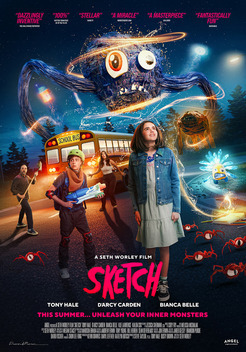
The latest film from Angel Studios, Sketch, does just that. It’s a departure from the studio’s previous films containing overt faith-based content. Which, apparently, concerns many of their core audience.
Sketch is about a widower and his children who are wrestling with the grief of their mother’s passing. The creative daughter, Amber, begins drawing monsters as a way of processing her pain. Through unusual circumstances, those sketched monsters come to life and begin terrorizing the community. The family races to stop the monsters they inadvertently released, while processing their loss and grief.
While “Sketch” has received relatively positive reviews among mainstream reviewers (the “family horror-comedy” currently stands at 96% “fresh” on Rotten Tomatoes), many Christian parents have objected to the film’s content.
Terry Mattingly, writing for Religion Unplugged, described some of the parental backlash Angel studio executives received to the film.
One Angel Guild member said: ‘This movie is demonic. I pulled my family out within 10 minutes.’
Others shared concerns about demons, and [Angel Studios co-founder Jeffrey] Harmon said ‘dozens and dozens and dozens’ said the movie needed a PG-13 rating because of language and horror issues.
One supporter bluntly asked if Angel is still a ‘Christian-based platform.’ Harmon stressed that its motto is that it seeks to ‘amplify light,’ but that also means ‘demons are real’ and believers must defeat them.
However, parent reviews of Sketch on the Common Sense Media page were largely mixed, many expressing anger at the “family-friendly” labeling of the film which contained mild profanity and darker content. For example, commenter GranolaMom wrote, “We naively trusted the Angel Studios label (which will now change) and Common Sense Media… There was nothing in this movie that spoke to Christian values. If you plan on watching this, please know that the movie will likely be disturbing and troubling – even for teens.” Michael W gives the film one-star, simply saying, “This is a horror movie.” Another reviewer said the film has “demonic… extremely dark spiritual undertones.” Similarly, Emily B wrote, “My kids left the theater crying. Dark and ocultic (sic)” and concluded that Common Sense Media’s endorsement of the film was “big time bait and switch” writing, “I accidentally exposed my kid to her first demonic horror movie. What a massive disappointment by Angel!!!”
Even popular influencers Damien and Kenady, who boast over 84K TikTok followers, called the film “satanic,” suggesting it contains “demonic overtones” and “a demonic spirit.” Their video review cites one-star ratings from disgruntled parents who left the theater with their children and chastises the studio for caving to worldly voices.
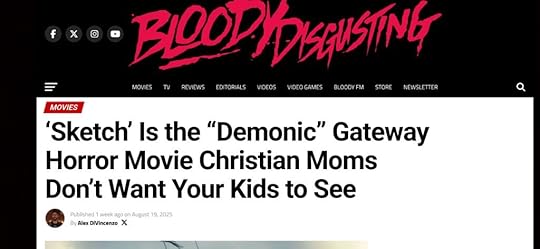
Of course, the backlash against Angel Studios did not go unnoticed by secular media sites, some of which gleefully mocked parents concerns about the film’s darker subject matter. The reviewer at Bloody Disgusting writes,
Concerned parents, many of whom identify as Christian moms, have taken to social media to express their disapproval — with some even calling for a boycott. These inflammatory remarks have been perpetuated by conservative voices who seemingly haven’t seen the movie.
A recent post from the film’s official Facebook page highlighting audience reviews only stoked the flames, contrasting five-star praise with one-star condemnations.
‘This movie is demonic. I pulled my family out within 10 minutes,’ reads one review. Another warns, ‘PARENTS BEWARE. Do not be fooled by the PG rating.’
So is the film worthy of such kickback? Perhaps partly. At least some of the audience response to Sketch seems to be the result of poor marketing.
One reviewer at Hollywood in Toto described this as a “what-were-they-thinking moment” for Angel Studios. “The marketing materials are sugar coating how unsettling it is,” Barry Wurst writes. Whereas the studio is selling the film as “a dark family fantasy,” the audience response is that “it’s much, much darker than that.” For one, Sketch contains frequent occurrences of mild profanity, a bugaboo for many Christian audiences. Furthermore, the film contains no overt faith elements. In fact, writer-director Seth Worley never “meant for this to be a faith-based film.” Compounding all this are the horror elements of the film, which include insinuations of bloody violence and demonic entities.
As a result of pushback against the film, Angel Studios released a statement instituting a new Recommendation rating. As Jeff Harmon, Co-Founder and Chief Content Officer for Angel put it, “The MPA, while helpful, is not precise enough for our families.” According to the updated guidelines,
Think of SKETCH as landing somewhere between PG and PG-13. The movie has a mix of thrilling moments, light peril, a few sharp words, and some pretty intense (but very colorful) monster scenes. This is a movie designed to thrill, make you laugh, and pull at your heart—but it’s not made for toddlers.
The studio’s update is, at the least, an admission of a marketing mishap.
Nevertheless, some elements of parental reaction are clearly over-the-top. In his article, Mattingly cites Steve Taylor, Christian musician and producer of the film:
‘This movie asks if children can be trusted to handle death and grief or should we try to shelter them from that,’ said Taylor, reached by telephone. ‘Some people — the new term is ‘snowplow parents’ — try to clear everything out of the way for their children. That’s an issue for Christian families and lots of other people. ‘But scary things happen in life. We have to be honest with children about that.’
Christian parents do well to monitor the media intake of their children. Like it or not, some things can be a “demonic gateway” to sin and evil. However, Christian parents are notorious for pop-cultural overreaction, often seeing all forms of fictional magic, scary images, and even profanity, as explicitly evil. Taylor is correct in the need for Christian parents to not always shield our kids from the “scary” aspects of life. While the ‘snowplow parent’ seeks to “clear everything out of the way for their children,” biblical parenting means helping our children process evil and grief in the light of the Gospel.
One Christian reviewer summarized:
There’s a moment in the film when, after seeing the shockingly dark and violent content of his troubled daughter’s sketchbook, a father encourages the girl, ‘I think life is all about balancing the good and the bad. If you don’t carry the good with you too, it will only make the bad stronger. I’m not saying get rid of the bad. I’m just saying you might want to include a little bit of the good.’ Sketch internalizes that message, balancing light and dark with an honesty that doesn’t do a disservice to either.
…Sketch allows space for some darker elements, but the emphasis is on finding light through that darkness.
The backlash to Sketch provides a unique window into contemporary Christian art and evangelical culture. On the one hand, the audience for “family friendly,” Christian content, is a devoted group. Angel Studios has, to a degree, earned that devotion. Nevertheless, this same audience can be rather unforgiving in its tolerance for PG-13 content. This makes marketing a rather tenuous affair, especially as it concerns darker thematic elements. Sadly, reactions to Sketch are a reminder of evangelicals’ Fundamentalists roots. Depicting monsters becomes perilous for the Puritan; at worst, portraying the demonic becomes a “demonic gateway.” Even if said monsters are simply stand-ins for real-world grief.
So while it’s good to see Christian studios developing darker, more “mature,” content, it’s troubling that this particular attempt was met with such disdain from so many believers. Yes, the studio is right to self-correct. Marketing matters. Nevertheless, rather than shielding our children from darkness, we Christian parents should equip them to grapple with evil and grief through the Gospel. Snowplow parenting is not biblical parenting. Because if we truly want to raise a generation of “knights,” banning “dragons” will not help.
July 23, 2025
How to ‘Scandal-Proof’ Your Faith (or Staying True to God when Others Don’t)
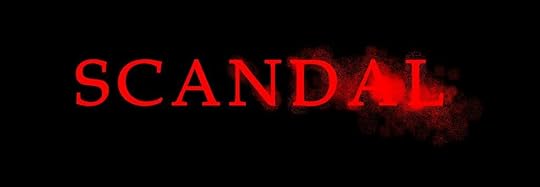
 The Church is not immune to scandal. Christians, like everyone, are sinners. Nevertheless, many Christians suffer disappointment, even abandon their faith, when a prominent Christian leader is exposed as a liar, pervert, or thief. What can Christians do to prevent their faith from being swayed by the un-Christian conduct of trusted pastors, leaders, or friends?
The Church is not immune to scandal. Christians, like everyone, are sinners. Nevertheless, many Christians suffer disappointment, even abandon their faith, when a prominent Christian leader is exposed as a liar, pervert, or thief. What can Christians do to prevent their faith from being swayed by the un-Christian conduct of trusted pastors, leaders, or friends?***
“The Church is like Noah’s ark,” said Reinhold Niebuhr. “If it weren’t for the storm outside, we couldn’t stand the stink inside.” 1
Anyone who’s been a part of the Church for any amount of time, is familiar with the “stink” of religious life. People let you down, they disappoint. Some, abuse their power. Others connive and deceive. The Church, like every other institution, suffers from the humans who comprise it.
Nevertheless, like Noah’s ark, the answer is not to leave the boat. Sadly, many do.
Statistics tell us that church attendance has declined in the United States. Likewise, spiritual deconstruction has resulted in an exodus of exvangelicals from the church. While some have simply transitioned into new denominational affiliations, most have drifted into some form of DIY spiritualism, untethered to organized religion, and awash in pagan thought and practice. The reasons for this religious decline vary. Some report political differences, while others note intellectual doubts and philosophical objections. However, most surveys recognize that “spiritual trauma” or religious “abuse” play a part, often citing institutional scandal as a factor. Why identify with an institution that has so many flaws and failures?
The existence of scandal, hypocrisy, fraud, and deceit in the Church is validation of its message — humans are sinners in need of a savior.Nevertheless, as painful and disappointing as religious scandals can be, there are very good reasons to remain a Christian. In fact, the existence of scandal, hypocrisy, fraud, and deceit in the Church is validation of its message — humans are sinners in need of a savior.
Author Frederick Buechner wrote that God chooses “…for his holy work in the world… lamebrains and misfits and nitpickers and holier-than-thous and stuffed shirts and odd ducks and egomaniacs and milquetoasts and closet sensualists.” 2 Scripture never portrays the Church as sinlessly perfect. It is comprised of extremely flawed, broken people. In fact, it is our confession of spiritual brokenness, not spiritual perfection, that grants us admission into the Body of Christ.
While Christians are called to live holy and blameless lives, they are never portrayed as perfect. The apostle James wrote, “We all stumble in many ways” (Jam. 3:2). John said, “If we claim to be without sin, we deceive ourselves and the truth is not in us” (I Jn. 1:8 NIV). And the apostle Paul put it bluntly, “There is none righteous, no, not one” (Rom. 3:10).
Contrary to what some believe, religious works and good moral living is not what makes someone a Christian. The prophet Isaiah declared that “all our righteous acts are like filthy rags” (Is. 64:6). No amount of “good deeds” can cure us of our condition. The Old Testament sacrificial system, steeped in the blood of animals, could not permanently satisfy the penalty for sin. “For it is not possible that the blood of bulls and goats could take away sins,” said the writer of the Book of Hebrews (Heb. 10:4). In the fullness of time, Jesus made atonement for His people (Heb. 2:17-18). Scripture said of Christ, “God made him who had no sin to be sin for us, so that in him we might become the righteousness of God” (II Cor. 5:21 NIV). The apostle Peter echoed these words saying, “For Christ also suffered once for sins, the righteous for the unrighteous, to bring you to God” (I Pet. 3:18 NIV). Because “all have sinned and fall short of the glory of God” (Rom. 3:23), no amount of charity or good deeds can make us right before God. The Christian must look to Christ, and His atoning sacrifice, to be made “right.”
This is why confession of sin plays such a huge part in spiritual health and growth. The Christian must live in a constant penitent state, acknowledging their sinfulness, and regularly turning to Christ for forgiveness. “If we confess our sins,” said the apostle John, “he is faithful and just to forgive our sins and to cleanse us from all unrighteousness” (I Jn. 1:9). The writer of Proverbs put it this way: “Whoever conceals their sins does not prosper, but the one who confesses and renounces them finds mercy” (Prov. 28:13 NIV). In fact, confession of sin even extends to others. James 5:16 says, “Therefore confess your sins to each other and pray for each other so that you may be healed.” Jesus articulated this two-way forgiveness in the Lord’s Prayer when He taught us to pray, “Forgive us our sins, as we have forgiven those who sin against us” (Matt. 6:12 NLT). Scripture is filled with commands, not just to humbly seek forgiveness from God, but to extend forgiveness to each other (Eph. 4:32; Col. 3:13; Matt. 6:14).
In this sense, the Christian faith is not dependent upon Christian perfection. Sin is the great equalizer. Both the mega-church pastor and the lowliest parishioner are sinners, in need of God’s forgiveness. No Christian celebrity or spiritual leader is above the need for forgiveness.
This is why the Bible reveals its heroes darker sides. None of the saints are untouchable. Noah got drunk (Gen. 9:20-21). King David committed adultery (II Sa. 11). Rahab was a practicing prostitute (Josh. 2:1-24). The prophet Elijah suffered depression and suicidal thoughts (I Kings 19:4-8). Jonah ran from God’s call (Jonah 1). Moses was a murderer (Ex. 2:11-15). The apostle Paul hunted Christians (Acts 22). Peter denied Christ before others (Lk. 22:54-62). Scripture does not paint a pretty picture of its heroes.
Because of this, we must take care to cultivate realistic expectations of other Christians, especially those in positions of power or celebrity. Yes, Scripture is clear that spiritual leaders will incur greater judgement (Jam. 3:1). Indeed, revelations of public scandal may be part of God’s promise to hold spiritual leaders to account! Meanwhile, the Christian layperson must avoid the temptation to venerate celebrity figures. There is no surer way to disappointment than to cultivate unrealistic expectations for our leaders. “All have sinned” (Rom. 3:23) said the apostle. Both the eloquent evangelist and the charismatic worship leader are sinners in need of forgiveness. Of course, low expectations can be equally debilitating. Striving to be Christlike and live with integrity are not unrealistic goals. However, acknowledging people’s quirks, idiosyncrasies, human fallibility, and unrighteousness, allows us to enter into far more realistic relationships with them. Knowing that my senior pastor is a sinner, like me, tempers my expectations.
We must take care to cultivate realistic expectations of other Christians, especially those in positions of power or celebrity.Another point to consider here is that the validity of the Christian faith does not rest upon the integrity of its representatives. Fallen men can argue persuasively for the existence of God. Why? Because evidence for the existence of God does not depend on any one person’s moral virtue. Indeed, a holy person can be a persuasive witness for the Almighty. But that person’s defection would not render God non-existent. The existence of God, the Resurrection of Christ, and the reliability of Scripture are not dependent upon the absence of church scandal. Christ’s Resurrection stands or falls on His claims and the historical evidence. The fact that a prominent evangelist or a charismatic worship leader are revealed to be manipulative sex addicts does nothing to change evidence for the Resurrection.
The person whose faith is shaken because some professing Christian is revealed to be a liar or a pervert demonstrates a misplaced or under-developed faith. Biblical faith rests in God and His promises, not upon His followers. As such, the Christian must learn to personally develop a healthy relationship with God. Learning to hear God’s voice and apply His commands helps one develop such an autonomous relationship. Habits of prayer and Bible study can also help one grow spiritually. Furthermore, being firmly persuaded of our beliefs, the intellectual and philosophical undergirding of the Christian religion, can be tremendously assuring during times of emotional crisis. Frankly, many of those who defect from Christianity because of scandal or disappointment were never properly grounded to begin with! The believer who questions God and His promises just because a popular pastor defects, has not properly grounded themself in God and His promises.
Frankly, this is one of the terrible fruits of celebrity culture. Even the first-century church was not immune to this phenomena. For example, the apostle Paul scolded the Corinthian Christians for cultivating schisms around popular ministers (I Cor. 3:4-9). Likewise, rather than revering the behind-the-scenes servant leader, Western Christians tend to segregate around “personalities.” We idolize charismatic speakers, media-savvy ministers, and musical performers. Mega-church services now often resemble concerts with smoke machines and multi-media presentations. While such churches may engage spiritual seekers, they also cultivate a celebrity-centricity, elevating Style above Substance, and conditioning members to be spectators rather than participants.
For this reason, the young Christian must learn to get their eyes off of Man. No, this doesn’t mean we should forsake Christian fellowship and not seek out good teachers and healthy churches. The Bible commands us to remain in close fellowship with other believers (Heb. 10:25). Neither does it mean discipleship and mentoring are unimportant. Being taught by someone more mature in the faith can be invaluable. However, the foundation of the Christian faith is Christ, not Christians.
As the hymnist said,
“My hope is built on nothing less, than Jesus’ blood and righteousness.
I dare not trust the sweetest frame, but wholly lean on Jesus’ name.”
If a Christian’s “hope” is “built” on something other than Christ, no matter how “sweet the frame,” then it isn’t biblical faith.
Of course, this doesn’t mean we shouldn’t be deeply disappointed and bothered by scandals. We SHOULD mourn when a prominent, influential Christian publicly confesses sin and/or is exposed. Some breeches of trust are so profound and so sinister, that spiritual discipline is necessary. Holding a fallen spiritual leader to account is not a violation of forgiveness. In fact, protecting abuse victims is a necessary part of such accountability. Being unshaken by scandal does not mean dismissing the culprits or ignoring the victims.
Nevertheless, our faith in God is not dependent upon the absolute integrity of His children. The Church does not stand or fall on the virtue of its members.
This is why, when Christ spoke of the Church, He spoke highly of it, proclaiming that even “the gates of hell will not overcome it” (Matt. 16:18). T.S. Eliot imitated the exuberance of Jesus’ statement when he said, “The True Church can never fail. For it is based upon a rock.” 3 Whereas some use the reality of scandals as evidence that the Church is compromised and failing, Jesus still described it as triumphant. In spite of the “lamebrains and misfits and nitpickers and holier-than thous…” the Church will never die. Even at its worst, “the gates of hell will not overcome it.” This is not a license for laziness and bad behavior. Rather, it is a sober reminder that the strength and vitality of the Church rests entirely in its Maker.
Scandal is a sad reality of our times. No one is immune from it. There is no spiritual leader or charismatic celebrity that is above sin and evil. For this reason, the Christian’s faith must rest in God, not Man. We must be careful to cultivate realistic expectations of other Christians, especially those in positions of power or celebrity. Conversely, this means developing a healthy relationship with God, being firmly persuaded of our beliefs, and finding assurances in God’s truth rather than the promises and performance of others. In this way, healthy Christian faith is always scandal proof.
1 Reinhold Niebuhr, cited by John MacArthur, The Qualities of True Love, Pt. 4, Online Study Guide, https://www.gty.org/library/sermonsli... 2 Frederick Buechner, as quoted by Philip Yancey, “Changes in the Wind,” Disappointment with God: Three Questions No One Asks Aloud, Zondervan; New edition edition (February 28, 1997) 3 T.S. Eliot, The Poems of T.S. Eliot Volume I: Collected and Uncollected Poems, Faber & Faber (2015), p. 524July 3, 2025
I’ll be Teaching on ‘Christians & Conspiracy Theories’ at the Fall 2025 Rhetorica Christiana Forum
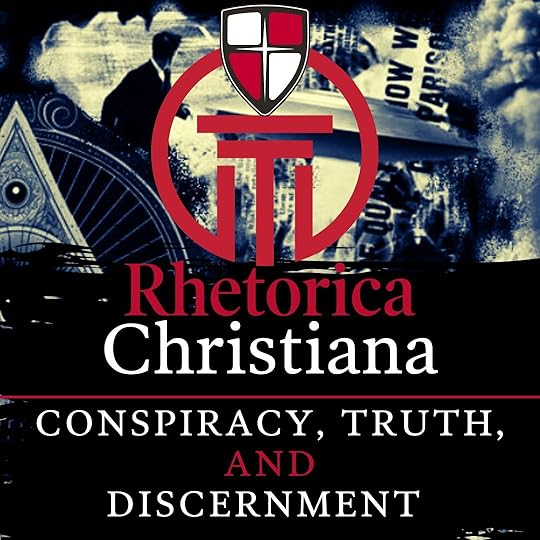

I’m thrilled to announce that I’ll be teaching on the subject of ‘Christians and Conspiracy Theories’ at this years’ Rhetorica Christiana Forum at William Carey University. This is such a fun and important subject. My topic headings will be:
How I Got Here (My Journey to the Fringe)Unpacking & De-Weaponizing the Term ‘Conspiracy Theory’Why Should Christians be Interested in Conspiracy Theories6 Principles for Interrogating Conspiracy ClaimsBreaking Bread w/ Flat-EarthersIf you happen to be in the area, the talk is free to the public. I’d love to visit, sign books, or just hang out. Election deniers and Mothman believers are welcome!
June 5, 2025
YA Fiction as a Tool for Political Activists, Anti-Racists, and LGBTQ+ Groomers
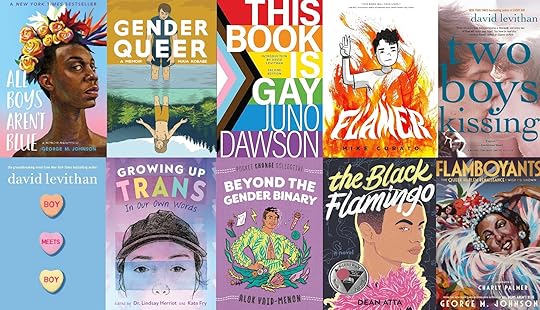
 YA Fiction has become a valuable tool for educators, activists, and LGBTQ+ advocates seeking to indoctrinate young adults into progressive ideologies and aberrant sexual lifestyles. Barnes & Nobles kicked off Pride Month by listing 19 Must-Read LGBTQIA+ YA Books to Read During Pride Month. Epic Reads followed suit with 25 Must-Read YA Books Featuring Gay Protagonists. Kirkus listed 30 Books for Young Readers During Pride Month. Love Reading lists 90 Spectacular LGBTQIA+ books to read this Pride Month and every month. Not to be outdone, Book Riot listed 100 Must-Read LGBTQIA YA Books. For their Pride 2025 Reading Challenge, Story Graph offers several category challenges which include reading a book by a trans author, a “queer author of color,” a “disabled queer author,” a “T4T romance” (trans couple), and “a book featuring a polycule” (a member of a polyamorous circle). Whew! Pride Month is an exceptionally important month for the YA fiction industry because LGBTQ+ advocacy is a thematic mainstay in the genre. This wasn’t always the case. Some suggest that Young Adult literature started as far back as Aesop’s Fables and the Canterbury Tales, with stories of adventure and morality. In the 1940s and 50s, Nancy Drew and The Hardy Boys “paved the way for modern YA which began to blossom in the 1960’s.” S. E. Hinton’s The Outsiders, is often considered one of the earliest identifiable YA novels, featuring a more realistic portrayal of then-contemporary adolescent issues.
YA Fiction has become a valuable tool for educators, activists, and LGBTQ+ advocates seeking to indoctrinate young adults into progressive ideologies and aberrant sexual lifestyles. Barnes & Nobles kicked off Pride Month by listing 19 Must-Read LGBTQIA+ YA Books to Read During Pride Month. Epic Reads followed suit with 25 Must-Read YA Books Featuring Gay Protagonists. Kirkus listed 30 Books for Young Readers During Pride Month. Love Reading lists 90 Spectacular LGBTQIA+ books to read this Pride Month and every month. Not to be outdone, Book Riot listed 100 Must-Read LGBTQIA YA Books. For their Pride 2025 Reading Challenge, Story Graph offers several category challenges which include reading a book by a trans author, a “queer author of color,” a “disabled queer author,” a “T4T romance” (trans couple), and “a book featuring a polycule” (a member of a polyamorous circle). Whew! Pride Month is an exceptionally important month for the YA fiction industry because LGBTQ+ advocacy is a thematic mainstay in the genre. This wasn’t always the case. Some suggest that Young Adult literature started as far back as Aesop’s Fables and the Canterbury Tales, with stories of adventure and morality. In the 1940s and 50s, Nancy Drew and The Hardy Boys “paved the way for modern YA which began to blossom in the 1960’s.” S. E. Hinton’s The Outsiders, is often considered one of the earliest identifiable YA novels, featuring a more realistic portrayal of then-contemporary adolescent issues. 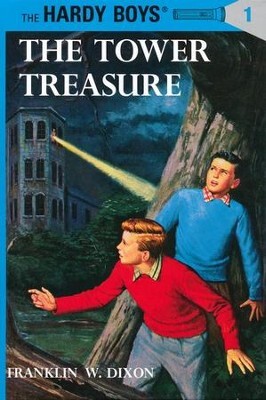 In A Short History of Queer YA Fiction, Daisy Porter suggests that the appearance of homosexuals in stories (around the late 1970’s) was a reflection of the times. Disapproval of gay lifestyles was still the consensus (though changing). Thus, portrayals of gays were often unflattering. But by the late 80’s and early 90’s, gay characters came into their own. Porter calls these books “gaytopian” novels, “where coming out and bullying weren’t really issues for the gay characters.” From this era, Queer YA Fiction moved to openly celebrating gay novels. During the 2000’s, LGBTQ+ acclamation merged with multiculturalism and critical race theory, producing a spate of “international gay characters.” Asian, Middle Eastern, Indian, and even “American queer teens of color” began to make regular appearances. Now, more than a decade after the writing of Porter’s essay, LGBTQ YA books published by mainstream American publishers have exploded in popularity, experiencing a 300% increase. USA Today noted that LGBTQ book sales have soared, nearly doubling sales (as of 2022). That growth was spearheaded by YA titles. What’s Behind the Explosive Growth of Queer YA Fiction?
In A Short History of Queer YA Fiction, Daisy Porter suggests that the appearance of homosexuals in stories (around the late 1970’s) was a reflection of the times. Disapproval of gay lifestyles was still the consensus (though changing). Thus, portrayals of gays were often unflattering. But by the late 80’s and early 90’s, gay characters came into their own. Porter calls these books “gaytopian” novels, “where coming out and bullying weren’t really issues for the gay characters.” From this era, Queer YA Fiction moved to openly celebrating gay novels. During the 2000’s, LGBTQ+ acclamation merged with multiculturalism and critical race theory, producing a spate of “international gay characters.” Asian, Middle Eastern, Indian, and even “American queer teens of color” began to make regular appearances. Now, more than a decade after the writing of Porter’s essay, LGBTQ YA books published by mainstream American publishers have exploded in popularity, experiencing a 300% increase. USA Today noted that LGBTQ book sales have soared, nearly doubling sales (as of 2022). That growth was spearheaded by YA titles. What’s Behind the Explosive Growth of Queer YA Fiction? 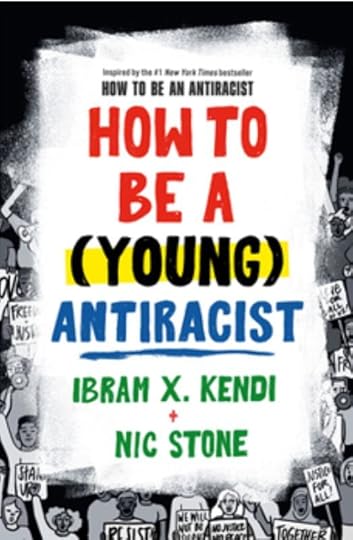 I’m grandfather to twelve children. It’s an incredible blessing, and one I take seriously. I recently learned that one of my grandkids’ middle school teachers was a political activist. She taught history, social studies, and ELA. Apparently, she used this platform to “educate” students into her worldview. Her Instagram page contained long-winded rants about white, cisgendered authority and revealed some of the curriculum she used. For instance, part of her “history” curriculum included two books by activist and anti-racist Ibram X. Kendi. There, she openly discussed teaching CRT (Critical Race Theory) and why it’s a valuable teaching tool. She also posted several YA books. Unsurprisingly, most of these titles featured non-traditional protagonists like lesbian girlfriends, gay in-laws, and trans and non-binary characters across the gender spectrum. As I quickly learned, YA literature has become a tool for political activists and LGBTQ+ groomers. Not only do many titles favorably feature queer, transgendered, and gender fluid characters, they promote “reproductive freedom,” anti-racism, anti-patriarchy, climate activism, anti-capitalism, and the entire family of progressive values. Here’s some actual synopses of School Library Journal’s selections for “Best Young Adult Books 2023.” “A classmate’s unwanted advances lead 16-year-old Ivy on a cross-country road trip to get an abortion. [The author’s] examination of the stigma surrounding abortion, small-town conservative attitudes, and support from sometimes unlikely places make Ivy’s journey a must-read for all young adult readers.”“Two neurodiverse teens find love together over the course of a summer internship in Europe. Tilly’s spunk, quirky attitude, and search for understanding in this opposites-attract rom-com make this a perfect match for fans of happily-ever-afters and realistic fiction.”“Transmasc Gem moved to small-town Georgia—closer to their Seminole roots—but fears they’re losing their mind, until the new girl informs them they’re both reincarnated gods—and soulmates. Intersectionally diverse with strong Native representation…”
I’m grandfather to twelve children. It’s an incredible blessing, and one I take seriously. I recently learned that one of my grandkids’ middle school teachers was a political activist. She taught history, social studies, and ELA. Apparently, she used this platform to “educate” students into her worldview. Her Instagram page contained long-winded rants about white, cisgendered authority and revealed some of the curriculum she used. For instance, part of her “history” curriculum included two books by activist and anti-racist Ibram X. Kendi. There, she openly discussed teaching CRT (Critical Race Theory) and why it’s a valuable teaching tool. She also posted several YA books. Unsurprisingly, most of these titles featured non-traditional protagonists like lesbian girlfriends, gay in-laws, and trans and non-binary characters across the gender spectrum. As I quickly learned, YA literature has become a tool for political activists and LGBTQ+ groomers. Not only do many titles favorably feature queer, transgendered, and gender fluid characters, they promote “reproductive freedom,” anti-racism, anti-patriarchy, climate activism, anti-capitalism, and the entire family of progressive values. Here’s some actual synopses of School Library Journal’s selections for “Best Young Adult Books 2023.” “A classmate’s unwanted advances lead 16-year-old Ivy on a cross-country road trip to get an abortion. [The author’s] examination of the stigma surrounding abortion, small-town conservative attitudes, and support from sometimes unlikely places make Ivy’s journey a must-read for all young adult readers.”“Two neurodiverse teens find love together over the course of a summer internship in Europe. Tilly’s spunk, quirky attitude, and search for understanding in this opposites-attract rom-com make this a perfect match for fans of happily-ever-afters and realistic fiction.”“Transmasc Gem moved to small-town Georgia—closer to their Seminole roots—but fears they’re losing their mind, until the new girl informs them they’re both reincarnated gods—and soulmates. Intersectionally diverse with strong Native representation…” 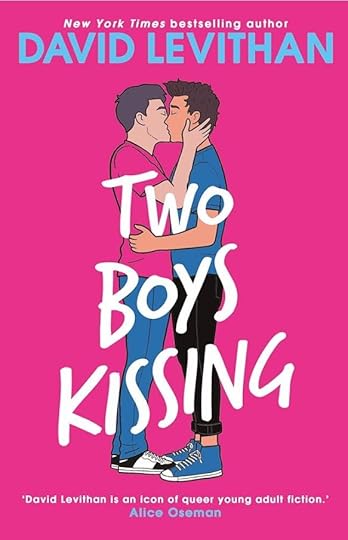 “Over the course of 10 dates, Ryan and Avery fall in love. Fans of Levithan’s Two Boys Kissing will recognize Ryan and Avery and rejoice in learning more about their story. A swoonworthy romance that will have readers reminiscing on their first love.”“Manny, a queer teen cast out of his devout religious family, is determined to reunite with his younger sister, who is still living with their adoptive parents. [The author] uses a nonlinear time line to tell a compelling story that explores trauma, abuse, and white saviorism.”“Vanja’s been a hero and a villain, but when her newest con accidentally wakes a sleeping goddess, she’ll have to work with new and old friends to keep from becoming a martyr. Thoughtful representation of asexuality and consent is woven in as Vanja and Eimeric’s romance evolves.”Similarly, Publishers Weekly’s list of Best YA novels of 2024 features a book entitled Compound Fracture which depicts an “autistic transgender 16-year-old” while addressing the “realities of politics and queerness.” Another book, Flamboyants: The Queer Harlem Renaissance I Wish I’d Known, highlights “Harlem Renaissance–era Black queer luminaries, the racism and homophobia they experienced outside the Black diaspora, and oppression within the community.” Libertad features a “gay poet” and political activist. Songlight features “Powerful telepaths [who] live in fear of extermination by an oppressive patriarchal theocracy.” The book explores “weighty topics of reproductive freedom, internalized homophobia, and state oppression.” Twenty-Four Seconds from Now contains “sex-positive messaging” and “open conversations about bodily autonomy and consent, making for a bold tribute to Black love…” As you can see, the YA genre has turned a corner, morphing from innocent coming-of-age tales and adolescent sleuthing to LGBTQ+ championing and identitarian politics. Themes involving queer characters, asexual characters, down-trodden immigrants, marginalized minorities, trauma, intersectionality, reproductive rights, white saviorism, ableism, neurodiversity, clinical depression, and oppressive patriarchal theocracy now dominate the YA landscape. This massive shift in YA content is more than simply the reflection of a changing culture, but a window into the forces that shape it. The Media and Academic Elites Taking Aim at Our ChildrenLGBTQ+ characters in film and novels have skyrocketed over the last several decades. Some of this is simply representative of a growing cultural acceptance of gay lifestyles. However, part of this is also the result of growing representation of alternate sexualities in art and culture. Not only has the media helped change views about gays and lesbians, “media intervention” is specifically used to “increase positive attitudes” towards gay and transexual persons. As a result, many studies now show that “younger participants with higher levels of media… have more positive attitudes on homosexuality.” But media is just one prong in this process of adolescent indoctrination. Scholastic has been a trusted source for children’s books for almost 100 years. According to its website, the group is “The world’s largest publisher and distributor of children’s books with $1.6 billion in annual revenue” as well as the “#1 website for U.S. elementary school teachers.” In 2016, Scholastic partnered with the activist group We Need Diverse Books. Their stated aim was to “showcase a wide variety of titles representing many types of diversity, including race and ethnicity, religion, LGBTQ, disabled characters, and more.”
“Over the course of 10 dates, Ryan and Avery fall in love. Fans of Levithan’s Two Boys Kissing will recognize Ryan and Avery and rejoice in learning more about their story. A swoonworthy romance that will have readers reminiscing on their first love.”“Manny, a queer teen cast out of his devout religious family, is determined to reunite with his younger sister, who is still living with their adoptive parents. [The author] uses a nonlinear time line to tell a compelling story that explores trauma, abuse, and white saviorism.”“Vanja’s been a hero and a villain, but when her newest con accidentally wakes a sleeping goddess, she’ll have to work with new and old friends to keep from becoming a martyr. Thoughtful representation of asexuality and consent is woven in as Vanja and Eimeric’s romance evolves.”Similarly, Publishers Weekly’s list of Best YA novels of 2024 features a book entitled Compound Fracture which depicts an “autistic transgender 16-year-old” while addressing the “realities of politics and queerness.” Another book, Flamboyants: The Queer Harlem Renaissance I Wish I’d Known, highlights “Harlem Renaissance–era Black queer luminaries, the racism and homophobia they experienced outside the Black diaspora, and oppression within the community.” Libertad features a “gay poet” and political activist. Songlight features “Powerful telepaths [who] live in fear of extermination by an oppressive patriarchal theocracy.” The book explores “weighty topics of reproductive freedom, internalized homophobia, and state oppression.” Twenty-Four Seconds from Now contains “sex-positive messaging” and “open conversations about bodily autonomy and consent, making for a bold tribute to Black love…” As you can see, the YA genre has turned a corner, morphing from innocent coming-of-age tales and adolescent sleuthing to LGBTQ+ championing and identitarian politics. Themes involving queer characters, asexual characters, down-trodden immigrants, marginalized minorities, trauma, intersectionality, reproductive rights, white saviorism, ableism, neurodiversity, clinical depression, and oppressive patriarchal theocracy now dominate the YA landscape. This massive shift in YA content is more than simply the reflection of a changing culture, but a window into the forces that shape it. The Media and Academic Elites Taking Aim at Our ChildrenLGBTQ+ characters in film and novels have skyrocketed over the last several decades. Some of this is simply representative of a growing cultural acceptance of gay lifestyles. However, part of this is also the result of growing representation of alternate sexualities in art and culture. Not only has the media helped change views about gays and lesbians, “media intervention” is specifically used to “increase positive attitudes” towards gay and transexual persons. As a result, many studies now show that “younger participants with higher levels of media… have more positive attitudes on homosexuality.” But media is just one prong in this process of adolescent indoctrination. Scholastic has been a trusted source for children’s books for almost 100 years. According to its website, the group is “The world’s largest publisher and distributor of children’s books with $1.6 billion in annual revenue” as well as the “#1 website for U.S. elementary school teachers.” In 2016, Scholastic partnered with the activist group We Need Diverse Books. Their stated aim was to “showcase a wide variety of titles representing many types of diversity, including race and ethnicity, religion, LGBTQ, disabled characters, and more.”
We Need Diverse Books was created to fight for more diversity in children’s and young adult book publishing at every level, among authors, editors, marketers, agents, publishers, and more. First and foremost, they wanted authors from marginalized communities to be given opportunities to have their voices heard in the overwhelmingly white, heterosexual, cisgender industry. And the results have been clear.
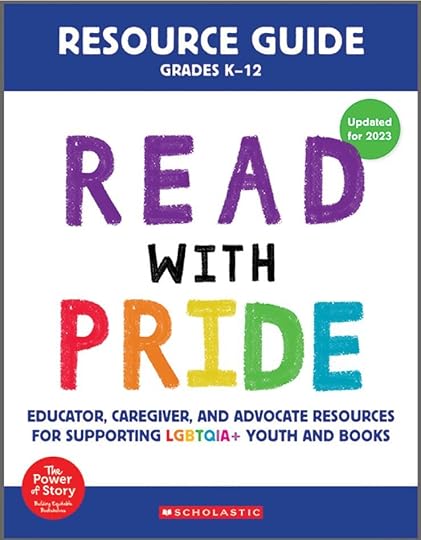 One of the many crucial platforms the activist group engages is schools. In 2023, Scholastic released a 12-page resource guide for educators, caregivers, and advocates titled Read with Pride. (Unironically, the resource does not mention parents.) In her interview with Bustle magazine, YA author Ibi Zoboi was candid about the aims of Scholastic’s We Need Diverse Books and its focus upon “educators,” saying,
One of the many crucial platforms the activist group engages is schools. In 2023, Scholastic released a 12-page resource guide for educators, caregivers, and advocates titled Read with Pride. (Unironically, the resource does not mention parents.) In her interview with Bustle magazine, YA author Ibi Zoboi was candid about the aims of Scholastic’s We Need Diverse Books and its focus upon “educators,” saying, We need diverse scholars and educators who will subvert the canon, the form, and many of our hierarchical systems of selecting and lauding books.This idea of “subverting” a “canon” of “hierarchical systems” is uniquely tied to Critical Theory. Critical Theory works to “subvert, dismantle, disrupt, overthrow, or change” existing social narratives and power structures. Of course, the canon such activists hope to subvert are those tethered uniquely to Western Civilization. These are stories mainly written by white, cisgendered authors who perpetuate heteronormative stereotypes, including Judeo-Christian morals, the traditional family unit, and free market ideals. Targeting teachers and school librarians is a fast-track to influencing adolescents and thus “subverting” Western values and social mores. Groups like School Librarians United make no qualms about their support for LGBTQ+ causes, even assisting other librarians in getting free LGBTQ+ books for their school library. GLSEN instructs educators as to how to build a Rainbow Library, providing “LGBTQ+ affirming text sets to schools free of charge.” They even provide Elementary School Lessons for educators. Likewise, Book Riot provides specific directions on How To Prepare For Pride Month in Libraries in 2025. Which is one reason why school libraries have become a battleground. For example, the Heritage Foundation describes how the inclusion of pornographic materials in school libraries has led to vocal objections and protest by parents. The “most removed” books from school libraries often contain “disturbingly explicit passages about sex.”
The trend has led to repeated protests across the United States concerning the access of inappropriate, pornographic materials to minors via their own public school libraries. For example, during a recent public hearing, one lawmaker was silenced for reading graphic sexual excerpts from a YA book in their school library. Ironically, the same book an adult is forbidden from publicly quoting is accessible to adolescents in their school library. While the media typically frames such protests as “book banning,” they are in fact civic opposition to age inappropriate content. Pushing Back Against a Culture of Grooming
Take, for example, the most-banned “Gender Queer.” That graphic novel features a picture of oral sex being performed on a sex toy. It also contains an X-rated passage…
“This Book Is Gay” provides a how-to guide to find strangers for sex on gay sex apps. “Out of Darkness” contains a rape. “l8r g8r” contains discussions of oral sex. “All Boys Aren’t Blue” contains underage incest. “It’s Perfectly Normal” contains drawings of children masturbating. “Lawn Boy” contains a passage about 10-year-old boys performing oral sex on each other. “Jack of Hearts” talks about a condom that is “covered in s—-.” “Crank” details a meth-fueled rape. “Lucky” also details a rape. And “A Court of Mist and Fury,” tame by comparison, contains an extremely explicit sexual passage.
Scholastic’s resource page for Educators, Caregivers, and Advocates, a page since deleted by the group, is up-front about their goals and methodology:
Books and literature are never neutral; by engaging with queer literature for children and young adults, you are disrupting the status quo that implies being cisgender, heterosexual, and allosexual are the default. You are showing children an expanded way of thinking and being that validates all children and all people.
Please notice: Scholastic is prescribing specific reading material for children that is designed to “disrupt the status quo” and “expand their way of thinking.” Though many hedge against the label of “grooming,” this is a textbook definition of the process. Academics, educators, and media are producing content for our children that is designed to destabilize and disrupt traditional family values and moral norms and reprogram their thinking regarding themselves, society, and human sexuality.
One result of such blatant indoctrination has seen the emergence of groups like Gays Against Groomers, “a 501(c)4 nonprofit of gays, lesbians, and others in the community who oppose the sexualization, indoctrination, and mutilation of children under the guise of radical ‘LGBTQIA+’ activism.” According to their website, the group asserts that such intentional indoctrination is “mass-scale child abuse being perpetuated on an entire generation.”
The emotional and physical wreckage suffered by victims of this “sexualization, indoctrination, and mutilation of children” is tragic.
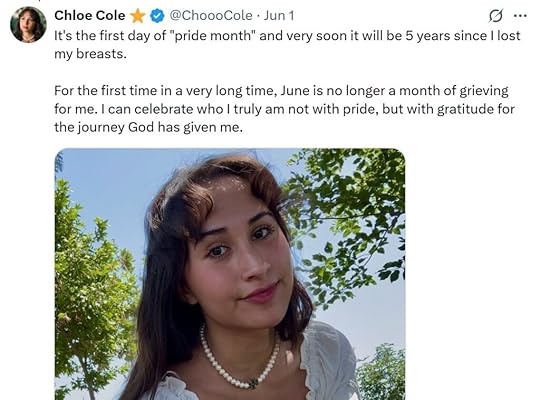
Take Chloe Cole. Cole is part of a growing movement of detransitioners (detransitioning is “the process of stopping or reversing a gender transition”). At the age of 13, Cole was put on puberty blockers. By 15, she’d had top surgery, an elective mastectomy. By 16, she realized she’d been misled. Her testimony before the U.S. congress is both riveting and gut-wrenching.
“I speak to you today as a victim of one of the biggest medical scandals in the history of the United States of America,” she began. Upon recommendation of a medical professional, she was given puberty blockers and then testosterone. Her body underwent violent changes. “My voice will forever be deeper, my jawline sharper, my nose longer, my bone structure permanently masculinized, my Adam’s apple more prominent, my fertility unknown. I look in the mirror sometimes, and I feel like a monster.” She mourned never being able to breastfeed a child, but instead having massive scars across her chest and skin grafts where her nipples used to be which weep fluid. Cole concluded, “So what message do I want to bring to American teenagers and their families? I didn’t need to be lied to. I needed compassion. I needed to be loved. I needed to be given therapy that helped me work through my issues, not affirmed my delusion that by transforming into a boy, it would solve all my problems… This needs to stop. You alone can stop it. Enough children have already been victimized by this barbaric pseudoscience.”
Thankfully, Cole, and other detransitioners, are leading victims of this “barbaric pseudoscience” to heal. Meanwhile, publishers of YA fiction continue to celebrate and advocate this dangerous and destructive lifestyle choice, while ignoring these “marginalized voices.”
In fact, the same vocal sources which indoctrinate youth into aberrant sexual lifestyles, abandon them when they finally come to their senses. The authors of How Big Tech Turns Kids Trans noted, “research shows that the majority of those who transition were persuaded to do so online through social media, blogs, and YouTube.” Conversely, in Detransition-Related Needs and Support: A Cross-Sectional Online Survey researchers found that detransitioners experienced a “major lack of support… from medical and mental health systems and from the LGBT+ community.” In other words, the same networks and groups which encouraged gender exploration and “coming out,” are notoriously silent when the same individuals were “going back.” It’s why some are calling detransitioners The Silenced Victims of the Transgender Movement.
Pushing back on such forces of grooming means supporting and platforming those courageous individuals who have detransitioned. Another similarly courageous group is ex-gays.
Individuals like Becket Cook are a good example. Cook was a very successful gay man, working in Hollywood, when he became a Christian and left the LGBTQ+ lifestyle. Cook’s podcast now regularly features other ex-gays and detransitioners, along with celebrities, apologists, and clinical professionals. Rosario Butterfield is another important figure. Once, a leading lesbian activist at a popular university, Butterfield surrendered her life to Christ. Her testimony as told in The Secret Thoughts of an Unlikely Convert is a fascinating account of a deeply militant LGBTQ+ activist and her change of heart. Then there’s groups like the Changed Movement which highlights testimonials of LGBTQ+ individuals who struggled through their brokenness and found their way to spiritual health through Jesus Christ.
***
The “sexualization, indoctrination, and mutilation of children” is a terrible reality of our world. Sadly, much of this process is conducted in plain sight, by adults, educators, and caregivers. Perhaps the most important response of the concerned parent to this reality is simply being informed about the forces at work to shape your kids lives and thinking. As the folks at Scholastic correctly noted, “Books and literature are never neutral.” The same is true of films and art. Thus, being aware of the content your child consumes, and its messaging, is a critical step in educating them and guiding them into truth and health. In part, this means recognizing that YA fiction is not always just entertainment or an innocent diversion. Sometimes it’s a tool for political activists, anti-racists, and LGBTQ+ groomers that will permanently scar your child.
April 9, 2025
How the Mainstream Media Fuels Interest in Conspiracy Theories
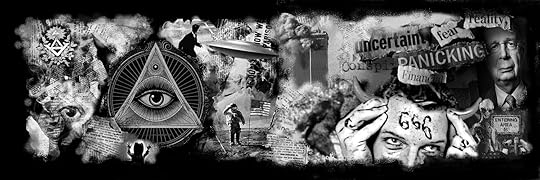

“This is the most serious problem within Protestant Christianity that I’ve seen in my lifetime.”
Pastor Derek Kubilius, vicar of Uniontown United Methodist Church in Uniontown, Ohio, shared these cautionary words with Vice Magazine back in October 2021. Kubilius hosted Crossover Q, a now-defunct podcast that aimed to prevent the spread of QAnon conspiracies among evangelical Christians. Despite the prevalence of issues like child trafficking, poverty, violent crime, drug abuse, family disintegration, and moral decline, Kubilius believed QAnon was “the most serious problem within Protestant Christianity” in his lifetime.
Q (as QAnon was called) originated sometime in 2017. Supposedly, an insider within the Trump administration who had “Q clearance,” a high level security clearance, began anonymously posting info to 4chan, an English-language imageboard. The posts, called “Q drops,” consisted of an amalgam of conspiratorial claims, mostly centering around the belief that “President Donald Trump [was] waging a shadow war against a cabal of Satan-worshipping, child-eating pedophiles who [were] conspiring to obstruct and overthrow him.” A fringe following began, soon fueled by media reports of crazed “alt right” devotees with cultish allegiance. It wasn’t long before evangelicals were indicted in these claims.
The reportage was emphatic:
Will Christian America Withstand the Pull of QAnon?Evangelicals need to address the QAnoners in our midstIs QAnon the new Christian right? With evangelicals fading, a new insanity risesWhy QAnon has Attracted So Many White EvangelicalsQAnon conspiracies infect American churchesWhy So Many Evangelicals are Susceptible to QAnon CrazinessQAnon has merged with white Christian evangelicals, experts say – and the results could be lethalSurvey Finds Wide Acceptance Of QAnon Ideas Among EvangelicalsThe assertion that evangelicals were disproportionally susceptible to QAnon, and other potentially dangerous conspiracy theories, was a repeated claim made by legacy media and many evangelical influencers. However, the claims made me curious.
I’m an active participant in an 8,000+ member SoCal mega-church. As an ordained minister and former pastor, I travel in many religious circles and have lots of friends in ministry. However, at that time, I’d never even heard of QAnon; I didn’t know a single person who claimed to believe in Q nor did any of my ministerial friends ever confess to having a problem with the spread of QAnon in their church. So the claims that the evangelical church was overrun by rampant Q infestation left me not a little dubious.
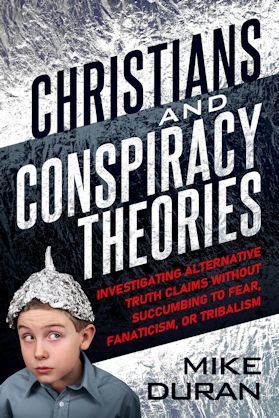
It led to some investigation on my part. As a result of that research, I wrote Christians & Conspiracy Theories: Investigating Alternative Truth Claims without Buying in to Fear, Fanaticism, or Tribalism. What I eventually discovered was that much of the data being cited to corroborate the claim of evangelical Q adjacency was sloppy and quite exaggerated.
For example, defining exactly what Q adherents believed was all over the map. Take the Southern Poverty Law Center which described Q as an “umbrella term for a sprawling spiderweb of right-wing internet conspiracy theories with antisemitic and anti-LGBTQ elements.” Some saw the network as a “rebranded Nazi cult,” while others believed that “QAnon-linked beliefs have inspired violent acts and have eroded trust in democratic institutions and the electoral process.” Beliefs as far-fetched as that President Joe Biden was “a malfunctioning robot disguised as a human” and that “lizard people control the world” were even attributed to Q followers. The ADL (Anti-Defamation League) described the incorporation of numerous conspiracies into Q as a “kitchen sink approach.”
This convolution of multiple claims and theories prompted the BBC News to admit “there are so many offshoots, detours and internal debates that the total list of QAnon claims is enormous—and often contradictory.”
Further compounding my suspicions about the claims were the ambiguous analytics often attached to such findings. For example, detailed polling forced one author at Wired magazine to admit that “only a fraction” of those labeled QAnon adherents actually believe the group’s most outlandish claims. In QAnon Supporters Aren’t Quite Who You Think They Are, Gilad Edelman wrote,
Until now, polling on QAnon has generally gone no further than asking people how they feel about the movement. This left unexplored what it actually means when someone says they believe in QAnon. Brian Schaffner, a political scientist at Tufts University, recently sought to find out. In September [2020], he conducted a nationally representative online poll asking respondents not just whether they support QAnon, but also whether they believe in eight specific false claims, including four that are central to the QAnon worldview. The poll was funded by Luminate and published by the Institute for Strategic Dialogue. The results suggest that most ‘QAnon supporters’ have never even heard of, let alone believe, some of the most outrageous claims associated with it. (italics mine)
At one point, the author even admitted that some data tended to “heavily overstate the level of belief” among actual Q followers.
“Most ‘QAnon supporters’ have never even heard of, let alone believe, some of the most outrageous claims associated with it.”But not only did I learn that Q was a tangled thicket of conspiracy claims with marginally devoted adherents, but that evangelical attachment to the group was equally nebulous.
For example, an article at RNS (Religion News Service) attempted to nail down some actual numbers. In More than a quarter of white evangelicals believe core QAnon conspiracy theory, the author, using data from The Survey Center in American Life (sponsored by American Enterprise Institute, AEI), summarized
27% of white evangelicals — the most of any religious group — believe the widely debunked QAnon conspiracy theory is completely or mostly accurate.
That number was repeated incessantly across the mainstream press. However, once I began parsing the data, an entirely different picture emerged. For one, the 27% figure was based on an extremely small sample size of “white evangelicals” (343 individuals, to be exact). Of those 343 individuals, 93 (27% roughly) believed or “mostly” believed in some variation of a claim associated with Q (“Donald Trump has been secretly fighting a group of child sex traffickers that includes prominent Democrats and Hollywood elites”). It is estimated that America is home to around 100 million evangelicals. Which led me to ask, Is a survey of 343 evangelicals enough to indict 27% of 100 million evangelicals with believing in QAnon? Furthermore, in the AEI survey, even higher numbers were found in the “Not Sure” category. In fact, of the highest number of any group, 50% of “Hispanic Catholics” claimed that they were “not sure” if Pizzagate (a central Q claim) was real. Nevertheless, Hispanic Catholics were never charged with dangerous levels of Q adjacency.
Due to these and much more interesting data, I was forced to conclude that the numbers used to indict evangelicals as Q adherents were largely inflated and misapplied. (I go into much more detail in On Conspiracy Theories and Why Christians SHOULD Be Interested in Them and in my book.)
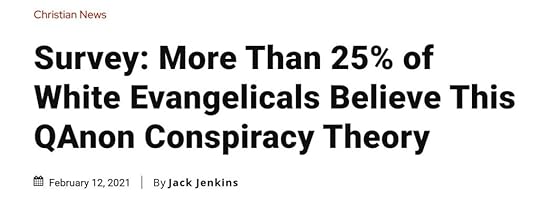
Fast-forward to 2025 and Evangelicals and QAnon are a non-issue. A simple Google search for “Evangelicals and QAnon” reveals a steeply declining address of the topic, with most links dating back to the 2020-22 period. The claim the QAnon was rampant in the Church, “the most serious problem within Protestant Christianity” in our lifetime, proved to be wildly inflated. But the exaggerated charges did more than just produce unnecessary concern — they piqued interest. I would not have even taken interest in evangelicals and Q-adjacency, much less spent a year writing a book on conspiracy theories, had the media not amplified the topic.
A similar pattern is in play today.
Take, for example, the continued decline in institutional trust. Much has been made about the decline of trust in government and science due to the pandemic. One detail often ignored in such metrics is the mainstream media’s complicity in amplifying dis/misinformation. Of course, media outlets have been in steep decline for several decades. Nevertheless, COVID accelerated the process.
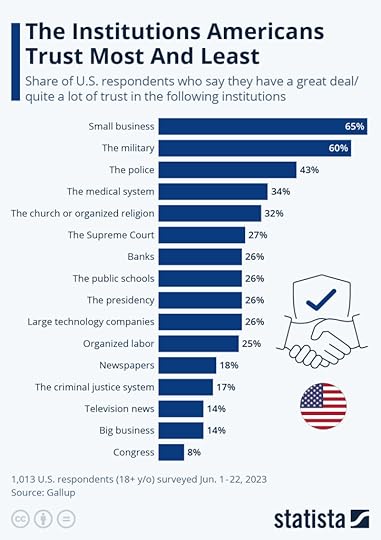
Just like the Evangelicals and QAnon claims, mainstream media outlets have continued to platform questionable and/or misleading information. Perhaps one of the best recent examples is the COVID-19 “Lab Leak Theory.”
Early during the coronavirus pandemic, speculation as to the virus’ origins were quickly squelched. Despite the fact that Wuhan, the epicenter of the outbreak, is home to the Wuhan Institute of Virology, a biosafety level 4 laboratory that is recognized as a premier research facility of coronaviruses, the medical-research establishment in Washington and London insisted that the virus had emerged naturally. The public was told that the most likely origin of the virus was a wet market in Wuhan, China. There, an animal which had been infected with COVID-19 was likely eaten or infected an unsuspecting patron. Somehow, zoological transmission occurred, causing the virus to leap from animal to human. It was the start of a global pandemic.
This quickly became the default narrative.
So resolute were the “experts” to furthering the “wet market theory” that they actively began repressing the “lab-leak theory.” Headlines and journalists across the world labelled the lab-leak theory as a “conspiracy theory.” The Guardian declared, Ignore the conspiracy theories: scientists know Covid-19 wasn’t created in a lab. Forbes added, The Wuhan Lab Leak Hypothesis Is A Conspiracy Theory, Not Science. Politifact fact-checked the claim, elevating it to “Pants-on-Fire” status, and calling it a “debunked conspiracy theory,” a claim they were forced to remove. As late as June 2022, Dr. Anthony Fauci told CSPAN that the virus leapt from “an animal host, perhaps through an intermediary host, into a human species which then spread throughout the human population.” In fact, the ex-CDC director even admitted that he received death threats for admitting he thought COVID was released from the Chinese lab. Some even went so far as to claim that the lab leak theory was racist.
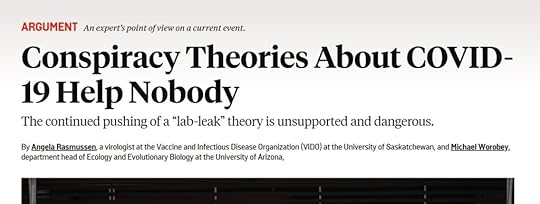
Meanwhile, social media companies and their Big Tech cohorts, like Google, Facebook, and YouTube, all censored data that insinuated the lab-leak theory. In January 2020, Facebook vowed “to limit and remove misinformation about the Wuhan coronavirus and tell you if something you shared is false.” The company banned 3,000 accounts for “vaccine misinformation” and removed over 20 million posts during the pandemic.
However, it soon became clear that the censors had been premature regarding the lab-leak theory. As highlighted in the powerful documentary What Really Happened in Wuhan, we soon learned that, after the spread of the virus, the Chinese government immediately blocked the release of information, removed its online database, refused to allow outside inspections, and some whistleblowers even vanished. Ben Lewis, in his New York Times article, Inside the ‘Misinformation’ Wars, noted how the lab-leak theory was initially labeled as “misinformation.” Yet the story began “evolving.”
Part of the “evolution” was a growing admission that the “experts” had gotten it wrong.
Eventually, the U.S. government was forced to admit that the lab-leak was the “most likely origin of the COVID pandemic.” The People’s Voice announced, The Washington Post Forced To Admit Wuhan Lab Leak Was NOT a ‘Conspiracy Theory.’ Facebook conceded that it would no longer censor claims that the virus might be man-made. While the Intercept admitted, The Lab-Leak Theory is Looking Stronger by the Day. It prompted the CIA to admit that the lab leak theory is the most likely origin of the pandemic. A congressional report on COVID-19 determined the virus likely emerged from a lab accident in China and that the U.S. government perpetrated “misinformation” by incorrectly calling the lab leak theory a “conspiracy.” All this caused one writer at The Heritage Foundation to describe the dissemination of misinformation and the censoring of data regarding COVID origins as The Lie of the Century.
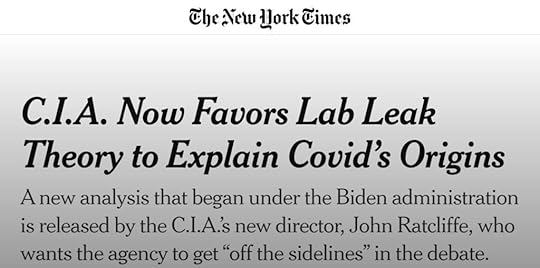
Whatever conclusion is ultimately reached regarding COVID origins, it is clear that labeling the lab-leak theory a conspiracy theory so early in the virus’ appearance was unwarranted. We simply did not have the necessary data to make such a claim. Then why were the “experts,” medical professionals, and the government so quick to do so? But perhaps an even more important question is, Why didn’t the mainstream media do its job? Why didn’t more journalists interrogate the claims being made by government and science, investigate alternative sources, fact-check data being offered, and push back when necessary? Instead, they became tools of the Establishment.
The aforementioned examples are just a sliver of the many news stories that have been misrepresented, misreported, selectively addressed, or even intentionally ignored by the mainstream press. The Hunter Biden laptop story is but another illustration of this claim. The story was regularly portrayed as conspiratorial and fake news. Politico ran the headline Hunter Biden story is Russian disinfo, dozens of former intel officials say. The story, which indicted the President’s son with nefarious overseas financial dealings, originally ran by the New York Post before being pulled and labeled “Russian disinformation” across most mainstream platforms. Business Insider called the story “a Russian disinformation operation,” while Facebook and Twitter actively censored the story. Nevertheless, the story ultimately proved true, with Hunter Biden himself admitting the laptop was his. The Wall Street Journal appropriately asked “how much has it hurt the credibility of the press and the intelligence services?“
Not only do such stories “hurt the credibility of the press,” they fuel suspicion as to the trustworthiness of our information sources. The exponential increase in podcasts and alternative media sources is a direct result of the mainstream press’ loss of institutional trust. Likewise, the unreliability of the media is one of the primary reasons for the growing interest in conspiracy theories and alternative truth claims. For once a story previously labeled a “conspiracy” proves true, the tables flip. Gaslighting someone as a “conspiracy theorist,” only to see their claims validated, is a fast track to contempt. As the old saying goes, “Fool me once, shame on you. Fool me twice, shame on me.” Americans’ distrust in the media, and subsequent interest in conspiracism, is a natural reaction to being fooled one too many times.
By broadcasting untrustworthy information, under-reporting contrary claims, indicting innocent parties, and failing to own up to its own errors and biases, the mainstream media perpetuates suspicion. And suspicion is fertile ground for all manner of conspiracy claims.
March 8, 2025
Is Donovan’s ‘Hurdy Gurdy Man’ about the Antichrist?
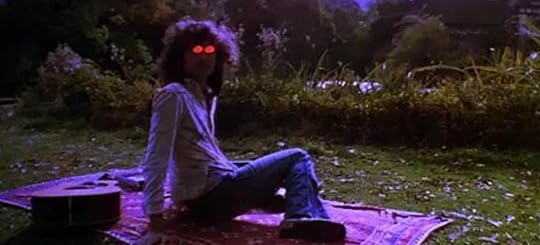

It’s a question that could only be borne out of some paranoid evangelical fever dream. Which it partly was.
I graduated high school in 1976. The 60’s counter-culture movement was winding down. I’d taken my share of LSD and exhausted the little monies I had on rock concerts and vinyl albums. So by the decade’s end, I was burned out, existentially lost, and in great need of a spiritual do-over. Which I got. In the Spring of 1980 I would become a Christian. It was a radical conversion, part of which involved a closer look at the music I was steeped in and the darker forces behind it.
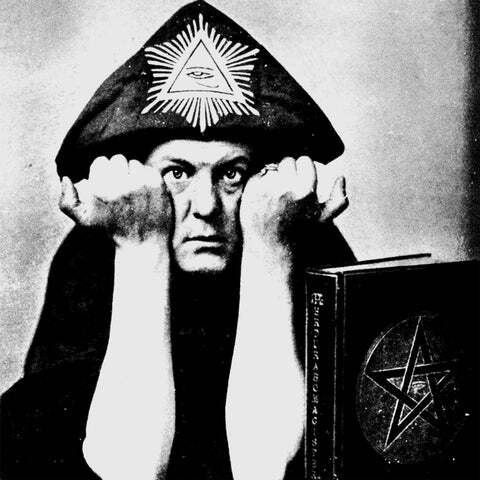
Aleister Crowley
Learning that Jimmy Page, lead guitarist for Led Zeppelin, had an avid interest in the occult arts, even purchasing Aleister Crowley’s mansion (Crowley was a renowned occultist, the self-proclaimed Beast of the Book of Revelation, labeled the “Wickedest Man in the World”), was just the tip of a conspiratorial iceberg. It didn’t take much to discover that dark esoterica permeated the music I enjoyed. The Beatles traveled to India (and elsewhere) learning Transcendental Meditation from Maharishi Mahesh Yogi. The boys from Liverpool quickly went from singing “I Wanna Hold Your Hand” to “I am the Walrus.” Meanwhile, the Rolling Stones had their own “demonic phase,” which included Mick Jagger’s “fascination with Satanic and Luciferian imagery.” Shortly before bandmate Brian Jones’ mysterious death, he’d explored incorporating indigenous “trance music” into the band’s sound. Similarly, Jim Morrison considered himself a shaman, an intermediary between his musical tribe and the pagan gods. The Moody Blues invited us to join Timothy Learys’ adventures along his “astral plane,” and even wrote a song commemorating a sacred Hindu syllable. And Yes’ double album, “Tales of Topographical Oceans” is based on four Shastric scriptures found in a footnote in “Autobiography of a Yogi” by Paramahansa Yogananda.
At one time, I would have scoffed at the intersection of the occult and rock music. But being that my quest for “enlightenment” had left me burnt out and broken, and the claims of Christ were suddenly making sense, the idea that other “forces” were toying with me only inflamed my growing paranoia.
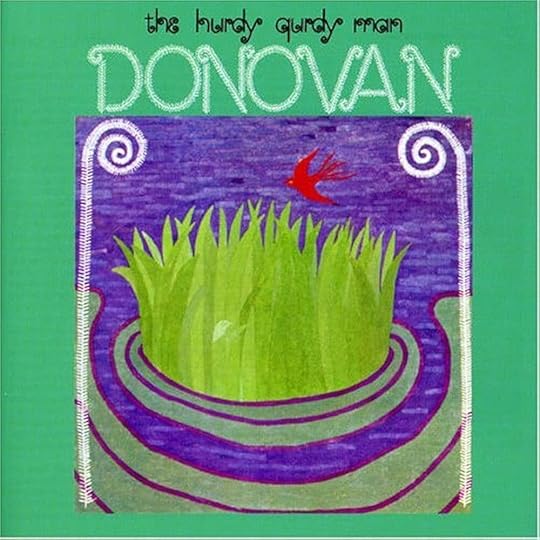
The Hurdy Gurdy Man by Donovan
Donovan’s song “Hurdy Gurdy Man” was an interesting addition to this growing conspiratorial playlist. Written and recorded in 1968, the lyrics follow thus:
Thrown like a star in my vast sleep
I open my eyes to take a peep
To find that I was by the sea
Gazing with tranquility.
Chorus: ‘Twas then when the Hurdy Gurdy Man
Came singing songs of love,
Then when the Hurdy Gurdy Man
Came singing songs of love.
Hurdy gurdy, hurdy gurdy, hurdy gurdy, gurdy he sang…
Histories of ages past
Unenlightened shadows cast
Down through all eternity
The crying of humanity.
Chorus repeat
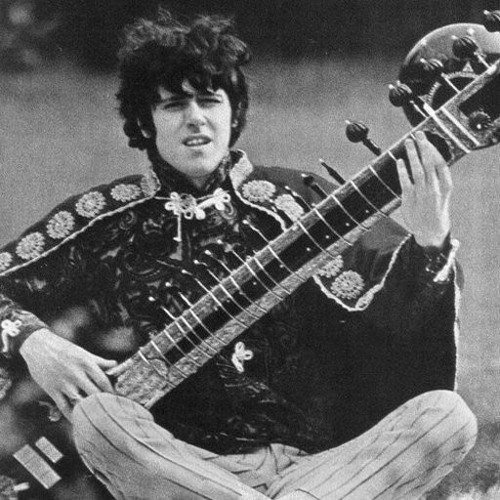
Donovan playing a tamubra
It’s an odd song, for many reasons. For one, the music. The song melds distorted fuzz guitar with Eastern influences, namely a tambura, which was a gift from George Harrison to Donovan. With the vibrato verbal effect, the song has a dreamy, yet unnerving quality (which is likely why it fits so well in David Fincher’s film about the serial killer, “Zodiac”). Not coincidentally, Donovan wrote the song as a result of his visit to India and the Maharishi. (The yogi’s influence among counter-cultural influencers is considered to be one of the primary vehicles for the import of Hinduism into the West.)
Secondly, and perhaps more relevant to this article, is the attachment of Jimmy Page to the project. Though questions have arisen about Page’s actual involvement in the song, on his website, he lists Hurdy Gurdy Man in his credits. Page’s interest in the occult only heightened my interest in his affiliation with Donovan and contribution to the song. Indeed, this took an intriguing turn when Page appeared in a fantasy sequence in his band’s 1976 film release, “The Song Remains the Same,” playing a hurdy gurdy box. (The hurdy-gurdy is a stringed instrument that produces sound by a hand-turned crank, rosined wheel rubbing against the strings.) In the film, as Page turns to the camera, his eyes glow an eerie red.
While Donovan’s lyrics are not about a hurdy gurdy box, the song appeared layered with a symbolism that invoked some understandably disturbing interpretations. Remember, at the time, a spiritual veil was being ripped from my face. I was coming to the Scriptures with open eyes. Both God and Satan seemed to be popping up everywhere. Thus, it was conjectured by some in my circle of psychonauts, that the Hurdy Gurdy Man was about the Antichrist. At the time, that interpretation was hardly a stretch.
In the Book of Revelation, the Beast, or the antichrist, rises out of the sea.
Then I stood on the sand of the sea. And I saw a beast rising up out of the sea (Rev. 13:1 NKJV)
In Scripture, the sea is often used metaphorically of chaos and danger. But it is also used of nations and the throngs of wicked. The prophet Isaiah said,
But the wicked are like the troubled sea, When it cannot rest, Whose waters cast up mire and dirt. (Is. 57:20 NKJV)
Elsewhere in his book, he proclaimed,
Woe to the many nations that rage— they rage like the raging sea! Woe to the peoples who roar— they roar like the roaring of great waters! (Is. 17:12 NIV)
Also, in the book of Revelation, an angel describes John’s vision of a sea as pertaining to the Gentile nations. “Then the angel said to me, ‘The waters you saw… are peoples, multitudes, nations and languages” (Rev 17:15 NIV).
In Donovan’s song, the Hurdy Gurdy Man arrives via the sea. The artist, mid-sleep, awakens “by the sea.” But it’s a troubled sea. In fact, the following verse tells us more about the spiritual climate preceding the arrival of this strange figure.
“Histories of ages past
Unenlightened shadows cast
Down through all eternity
The crying of humanity.
‘Twas then when the Hurdy Gurdy Man comes singing songs of love…”
So this oddly messianic-type figure arrives during a time when “unenlightened shadows” are being cast and the “crying of humanity” is echoing “down through all eternity.” This is the hour in which the Hurdy Gurdy Man arrives “singing songs of love.”
 Detail from “The Beast with the Seven Heads and the Beast with Lamb’s Horns,” 1511, Albrecht Dürer
Detail from “The Beast with the Seven Heads and the Beast with Lamb’s Horns,” 1511, Albrecht Dürer
The scenario rather strikingly parallels the biblical account of the Antichrist. For not only would the Beast rise out of the troubled sea of humanity — in many eschatological constructs, he is revealed during the Great Tribulation — but he arrives “singing songs of love.” In fact, the Antichrist is sometimes called “the Man of Peace” because he will bring a false peace to the troubled world. Some see Daniel 9:27 as teaching that the Antichrist will make a peace covenant with warring (Middle Eastern) factions, thus deceiving many. In fact, concerning the end of this present age, the Apostle Paul cautioned the Thessalonian believers, “For when they shall say, Peace and safety; then sudden destruction cometh upon them, as travail upon a woman with child; and they shall not escape” (I Thess. 5:3 NIV). Thus, the Beast will proclaim “Peace, peace,” when there is no peace.
Furthermore, the Antichrist has an accomplice. The Bible calls him “the Dragon.” The world “worshipped the dragon which gave power unto the beast” (Rev. 13:4 KJV). Scholars interpret the dragon variously. His inclusion here is only mentioned because the Hurdy Gurdy Man has a similar accomplice. He is “the Roly Poly Man.” While Donovan mentions the Roly Poly Man fleetingly, the mysterious figure clearly appears to help the Hurdy Gurdy Man convey his message. His mention only fueled our speculation about the Hurdy Gurdy Man’s archetypical object.
Unlike many of the songs and musicians I’d encountered who’d openly professed esoteric dabblings, Eastern religion was the only “occult” element blatantly attached to the Hurdy Gurdy Man. In an interview with Donovan in 1988, he elaborated on the meaning of the song:
…I know I am the Hurdy Gurdy Man. But also the Hurdy Gurdy Man is all singers who sing songs of love. The hurdy-gurdy is an instrument from the sixteenth century. The Hurdy Gurdy Man is a chronicler. The Hurdy Gurdy Man is like a bard. The Hurdy Gurdy Man is any singer-songwriter in any age, whether they were Ireland of whether they were in the streets of New York during the 60s.
Songwriters tend to look for a world that will improve. The singing of songs for a better world can be seen in any age. Especially in the 20th century. So any singer for peace is a Hurdy Gurdy Man.
While Donovan’s explanation makes zero mention of the Antichrist, the song’s theme remains particularly telling. Bringing world peace has been an openly stated goal of many a musician, occultist, and political statesman. But what kind of peace are they offering? Like the Antichrist, they are offering a temporary peace, a vapid peace.
After years of sex, drugs, and rock ‘n roll, the end of the 1970’s left me burned-out, restless, and completely unfulfilled. The minstrels, like Donovan, who’d sung about love, eventually got divorced or died of overdose. Eastern religion told me that life was “maya,” an illusion. But the moral and existential walls I kept beating my head against seemed very real. And the more I considered Christ, the more the gurus and hurdy gurdy men just couldn’t stand up to Him.
So is Donovan’s Hurdy Gurdy Man about the Antichrist? Naw. But those “enlightened” souls who arrive “singing songs of love” may share his ambition. Like the antichrist, Eastern religion and occultism offer a false peace. Sadly, that “peace” is often packaged in a catchy little song.
February 5, 2025
How Should Christian Novelists Portray LGBTQ+ Characters in Their Stories?
LGBTQ+ characters in film and novels have skyrocketed over the last several decades. Some of this is simply representative of a growing cultural acceptance of gay lifestyles. However, part of this is also the result of growing representation of alternate sexualities in art and culture. Not only has the media helped change views about gays and lesbians, “media intervention” is specifically used to “increase positive attitudes” towards gay and transexual persons. As a result, many studies now show that “younger participants with higher levels of media… have more positive attitudes on homosexuality.”
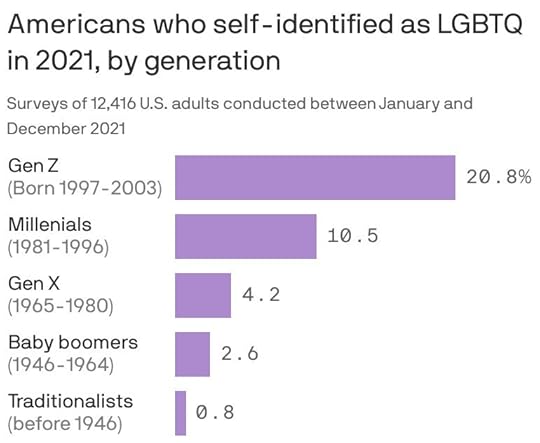
Because of this, statistics now reveal a large generational shift in LGBTQ+ identification. Gen Z adults identify as LGBTQ at much higher rates than older Americans. One report even found that nearly 30% of Gen Z adults identify as LGBTQ.
One result of this radical shift, or what some have called the “gaying of culture,” is that traditionalists, like myself, are viewed, at best, as out-of-step with our social evolution. At worst, we are portrayed as bigoted, hateful, and discriminatory. Some even go so far as to frame “traditional values” as “a potent weapon against LGBTQ rights.”
This poses challenges for us traditionalists who appreciate and engage in telling stories. One of the rules of storytelling is to “tell the truth,” to portray characters authentically, in true-to-life ways. Not only do 7.6% of U.S. adults now identify as lesbian, gay, bisexual, transgender, or something other than straight or heterosexual, but the visibility and social acceptance of LGBTQ+ individuals continues to grow. As storytellers, it behooves us to, at least on occasion, include LGBTQ+ characters in our stories. But for the conservative Christian writer, such inclusion poses serious risk.
Note: This article is not a defense of the traditional, historic Judeo-Christian view of homosexuality. And while I acknowledge that many professing Christians embrace LGBTQ+ affirmation, their position is still contrary to the historic stance held by the Church. Despite the fact that traditionalists like myself are now in a minority, the truth is that many professing Christians and Christian writers still hold to historic views on gender and sexuality. This article is aimed at them.
So how should a Christian author who believes practicing homosexual lifestyles are abnormal and sinful portray queer characters in their fiction? Or should they?
There’s basically four different ways for a Christian writer to approach to this question:
Avoid any portrayals of LGBTQ+ characters.Remain neutral in the portrayal of LGBTQ+ characters.Portray LGBTQ+ characters positively.Portray LGBTQ+ characters negatively.
Each of these approaches has an upside and a downside. For example, many Christian authors simply avoid any portrayals of queer characters in their stories. The upside of this approach is that it mostly prevents criticism. You can’t be accused of affirming homosexuality or wrongly portraying LGBTQ+ characters if you don’t have any in your stories. The downside is, some may accuse you of simply playing it safe and ignoring a very real segment of humanity. Similarly, the author who portrays LGBTQ+ characters neutrally — neither making them heroes or villains, happy or sad, saints or sinners — can be accused from both sides. I recently encountered a popular Christian author who was accused by a reader of endorsing homosexuality because of the inclusion of a neutral gay character in a story. The author publicly affirmed their belief in traditional biblical sexuality. Nevertheless, simply the inclusion of a neutral gay character was interpreted by some as endorsement. On the other hand, the neutral gay character can also be charged with being a prop, a quota effort to ensure one’s diversity bona fides. However a Christian decides to approach queer characters, they will likely be met with opposition or criticism, either from their own tribe or another.
Whatever one’s approach to this sticky subject, Christian writers are obligated to portray characters and their lifestyle choices realistically. This is true across the board. We should neither glamorize criminals nor make them shallow, one-dimensional characters. Likewise, the Fundamentalist preacher is an easy character to stereotype. However, the Christian writer should make an effort to humanize such a character and avoid simplistic caricatures. Regarding LGBTQ+ characters, this is a two-sided coin. On the one hand, portraying LGBTQ+ characters means not dehumanizing and stereotyping them. On the other hand, a realistic portrayal could include elements that some will find disturbing and offensive.
On the one hand, portraying LGBTQ+ characters means not dehumanizing and stereotyping them. On the other hand, a realistic portrayal could include elements that some will find disturbing and offensive.In her helpful article, Why Christian Authors Should Consider Tackling LGBTQ+ Issues, writer Sarah Burns cautions Christians to avoid dehumanizing the LGBTQ+ community. She writes,
Opposing a worldview doesn’t license you to villainize it or turn it into a caricature. Homosexual and transgender individuals are not the embodiment of black-lipsticked Satanists (nor are Christians bastions of incorruptible light). Assigning characters negatively skewed stereotypes will injure your testimony. Dispel any personal, preexisting biases and thoroughly research the struggles and ideology of the LGBTQ+ community. You can disarm hostile readers with understanding and fair treatment.
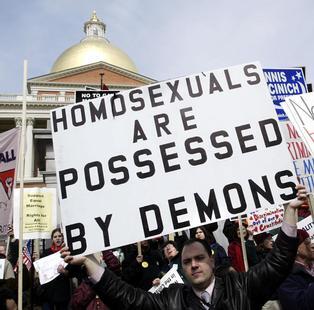
For the conservative Christian writer, the temptation is to portray LGBTQ+ persons unfavorably. Because they are living in sin, we feel obligated to make sure our readers know this. The result is often unfair caricatures and gross exaggerations. Like the rest of us, LGBTQ+ persons are humans. They can be kind, merciful, helpful, courageous, smart, and wise. The Christian writer is responsible to portray the noble human elements of their queer characters.
Conversely, Burns encourages Christian authors to not compromise the truth about LGBTQ+ lifestyles.
You can write gently and compassionately while still expressing disagreement with a worldview. Les Miserables sympathizes with the circumstances motivating Fantine’s choices, but it never implies that her descent into prostitution is right, and she still experiences hard-hitting consequences. Whether or not an LGBTQ+ lifestyle seems innocuous to outside observers, the mental and spiritual effect can run deep. Consider the spike in suicide rates for LGBTQ+ youth, or the prevalence of depression within the community. Internalized shame, identity struggles, and irreversible surgery are merely a few factors behind those statistics that you can incorporate into your story.
In this sense, portraying LBGTQ+ characters realistically may involve depicting uncomfortable consequences of sin and unhealthy lifestyle choices.
Rachel Gilson, a former lesbian and now born-again Christian, asked the question, How to Depict Characters Living in Sin without Endorsing Their Choices? She writes,
Human depravity cannot be erased this side of heaven, but it can be and has been conquered—through Christ. When we show the damage sin has caused, rather than pretending it doesn’t exist, we help readers to long for the wholeness and comfort only He can bring…
Sin should never be peddled as entertainment. If a character acts on same-sex attraction, the incident needs to be tinted with an understanding of Scripture’s teaching on marriage. Since today’s culture scorns biblical ethics, addressing problematic behavior in some capacity is crucial or you’ll risk implying that it’s acceptable. Normalization occurs when sin is treated like a personality quirk.
Showing the “damage” homosexual sin causes will likely elicit howls of “homophobia” from critics. However, there is much data affirming the incredible downsides of many LGBTQ+ lifestyles. For example, the important, yet controversial book After the Ball: How America Will Conquer its Fear and Hatred of Gays in the 90’s noted that promiscuity among gays (specifically gay men) is significantly higher than among straight males. The authors called this phenomenon the “Seven Week Itch,” citing the high incidence of “open relationships” and multiple partners among gay men. Another study estimated that the median number of sexual partners for homosexual males was 2.75 times higher than for heterosexual males. Depression, anxiety, drug and alcohol abuse are typically higher among homosexual males than heterosexuals. Furthermore, studies continue to show that children raised by gay couples have increased incidences of psychological and social maladies. And in general, men who have sex with men have higher rates of HIV and STDs than their straight cohorts. (For in-depth discussions of such data, see Is the Church Pro-Gay: How to respond to a Moral Crisis with God’s Love, especially the chapter It’s a Gay Life, by Shawn Mathis.)
A realistic portrayal of LGBTQ+ characters could involve uncomfortable, troubling elements to some. For example,
A gay character who suffers from severe depression and contemplates suicide because of his sexual confusion and promiscuous lifestyle.A trans teenage character who suffers remorse for sex change procedures and begins to de-transition.A bisexual who contracts syphilis and HIV and seeks healing and respite.A BDSM fantasy leads a female character to accidental death by torture.All of these cases have real-world parallels. Nevertheless, despite being authentic and true-to-life, many would still object to authors portraying such characters.
Even more important to Christians is the reality that some gays and lesbians repent of their sin, renounce their previous sexual identities, and become Christians. Individuals like Beckett Cook and Rosario Butterfield are actual persons who were deeply embedded in LGBTQ+ culture and found salvation, and escape, through faith in Jesus Christ. If the goal of the Christian writer is to be honest, then such characters also deserve to be portrayed.
No matter how a Christian writer chooses to portray gays or lesbians in their stories, they will likely take heat from someone. This is one reason why some Christian authors simply avoid the issue together. Better to scrub their stories of any reference to LGBTQ+ characters than to risk angering some or offending others. Nevertheless, we Christian storytellers are called to be truth tellers. This includes being truthful in our portrayals of LGBTQ+ characters (if we choose to write them). Such portrayals are not a license to dehumanize and caricature such people. But neither are such portrayals necessarily an endorsement of the gay lifestyle. In fact, an honest, realistic portrayal of LGBTQ+ persons may involve depicting the uncomfortable consequences of sin and unhealthy lifestyle choices.
January 14, 2025
“Christian Horror” is Now Available in Audiobook!
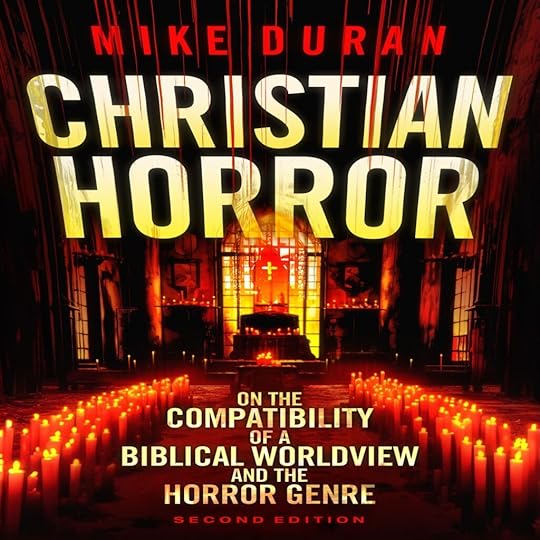
The Second Edition of Christian Horror: On the Compatibility of a Biblical Worldview and the Horror Genre, is now available in audiobook. Narrated by Randy Streu, this updated edition has almost twice the content as the original, clocking in at nearly 65K words (as opposed to the first edition’s 35K). Of course, I’ve included references to more current books, films and research, as well as adding several new categories and appendices, such as a section on Folk Horror, Generational Sin and Family Curses, and appendices on Occult Objects (skulls, and haunted houses), “Woke” Horror, Ghosts, and Zombies. As with the first edition, my goal is simple—to provide an apologetic for engaging with the horror genre from a biblical perspective.
“Frighteningly profound. Duran’s balanced reasoning and sound biblical exegesis provides a sure foundation for a theology of horror for Christians. He shows with great literary and storytelling insight how both the Bible and other stories use horror as a genre to communicate God, goodness, truth and beauty.”— Brian Godawa, author, Chronicles of the Nephilim and Cruel Logic: The Philosopher Killer
You can purchase the audiobook version of Christian Horror HERE.
December 27, 2024
Religious Themes in Horror Films 2024
Religion continues to be a prevalent thematic element of many contemporary horror films. 2024 was no exception. There are many possible reasons for the intersection of horror and religion, which I discuss at length in my book Christian Horror: On the Compatibility of a Biblical Worldview and the Horror Genre. Exploring existence and the human condition through confrontations with good and evil, heaven and hell, the afterlife and terrors of the unknown, are all components of the horror genre. Religious horror explores our age-old fears of death and the unexplained, while forcing us to grapple with the demonic and the divine. These are just a few reasons why religion and horror are inseparable companions.
Likewise, 2024’s cinematic horror canon was replete with representations of religion and religious themes. As one would expect, not all these iterations are favorable. The institutional Church and its cronies are perennial villains throughout film history. Nevertheless, the iconography and moral framework shaped by our inherently religious Western worldview, serves as a reminder of the place religion and Judeo-Christian themes hold in our storytelling and collective psyche.
That said, here’s a few of the notable horror films that incorporated religion, in some form, into their narrative vision.
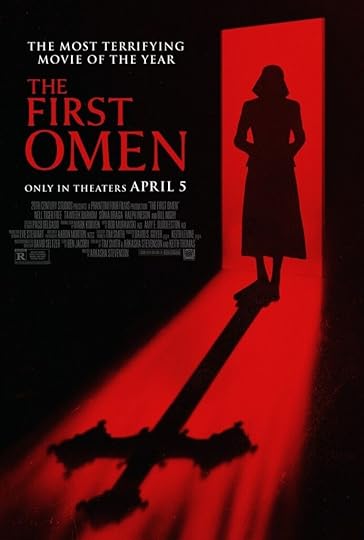
The First Omen — A surprisingly good prequel to the long-running franchise (which began in 1976) tracing the birth of the Antichrist. (In Christian eschatology, the Antichrist is a powerful world leader who will arise during the end times and attempt to steer the world away from Christ before His Second Coming.) The First Omen takes us back to the child’s inception within a creepy Italian orphanage / nunnery. (Interestingly, this isn’t the only creepy Italian nunnery to make the list.) Margaret, the young, naive nun-in-training, befriends Carlita, a mistreated orphan who suffers disturbing visions. Bad things follow Carlita as Margaret learns the young woman is being groomed for something sinister. Apparently, high-ranking clerics within the church, desperate to regain power against a growing secularism, seek to orchestrate the birth of the Antichrist in hopes of creating fear and driving people back to the Church. Carlita is intended to be the Beast’s mother. One reviewer at Dread Central calls The First Omen The Perfect Religious Horror Film. While the film isn’t “perfect,” (at the least, it’s theologically muddled), it effectively employs many common religious horror tropes. Biblical references to the Antichrist, and his number (666), punctuate the many bad things which happen to those who dare cross the Devil’s spawn.
Exhuma — This South Korean horror film combines elements of Eastern folk religion, Western Christianity, and shamanism in a tale about grave exhumation and the breaking of generational curses. The central story surrounds two shamans, a funeral director, and a geomancer, all of whom have different backgrounds and views on death. (The funeral director, in particular, is a vocal Christian who studies the Bible, prays, and quotes Scripture.) The plot revolves around disturbing and confronting a vengeful, ancestral spirit. But how they protags accomplish this is a varied palette of religious mysticism and ritual. One film review site describes Exhuma as “a uniquely South Korean film that combines elements of folklore, shamanism, Christianity, and cultural superstitions into a weird, twisting, chilling ghost story.” Unlike many Western films, all these varied religious elements are treated respectfully. Though rooted in an Eastern worldview, Exhuma still invokes a non-materialistic view of a world filled with spirits and ancestral curses, a world where prayer and religious ritual still hold power. For example, during their climactic clash with the final deity, the Christian funeral director quotes the Bible saying, “One person may be defeated, but two people can put up a fight. A threefold rope is not easily broken. Ecclesiastes 4:12.” While extremely atmospheric, containing wonderful cinematography and pacing, I found the film quite chilling and extremely well done.
The Devil’s Bath — Though categorized as horror, this film is more properly labeled as “dark history” (if there is such a genre). While there are no supernatural elements, the film is incredibly bleak. The Devil’s Bath is a German film based on the book Suicide by Proxy in Early Modern Germany: Crime, Sin and Salvation. The film traces the events leading up to the criminal trial of Agnes Catherina Schickin who was sentenced to death for murdering a child. Agnes engaged in the practice of “suicide by proxy,” an unusual crime that was novel to the seventeenth and eighteenth centuries in German-speaking Central Europe and Scandinavia. The act allowed one who desired suicide to suffer death and still go to heaven. We see this in the opening sequence of the film where a distraught mother kills her child, confesses her sin to the parish priest, is resolved, before being executed for her crime. Agnes is an extremely devout individual, regularly saying prayer and performing rituals. While she deeply wants a child, her new husband repeatedly rebuffs her attempts. Furthermore, her extremely demanding mother-in-law, combined with harsh domestic demands, loneliness, and isolation, eventually drive Agnes insane. As she spirals into despair, Agnes plots “suicide by proxy.” She will commit a crime punishable by murder, confess her sin before execution, therefore guaranteeing heaven. The Devil’s Bath is a bleak reminder of the harsh historical elements and superstitions surrounding medieval religion. For example, in the film a broken candle is said to indicate a bad future, keeping a horseshoe upright brings luck, and a severed finger assists in fertility. The film reminds us that living under such primal fears and mythology, not to mention the unrelenting expectations often placed upon wives and mothers, is its own type of horror.
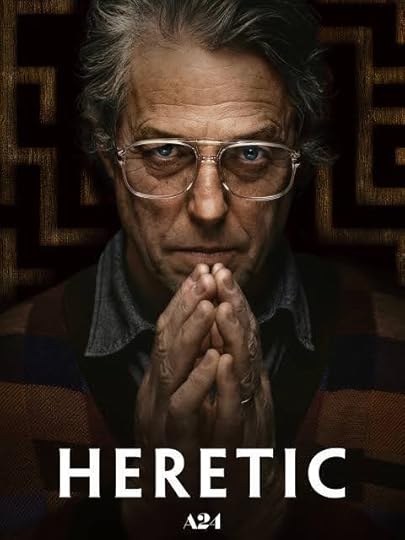
Heretic — Though not “faith friendly,” this horror film is unapologetically about religion. The antagonist is an atheist intellect (played deliciously by Hugh Grant) who imprisons two female Mormon missionaries in a psychological game of religious cat-and-mouse. Grant’s character definitely has the edge on anti-religious volleys. But while his critiques are initially aimed at Mormonism, which the girls do a fairly meager job of defending, we soon learn that the antag has much bigger fish to fry. Namely, he hates all religions. Though the “sisters” have a few good retorts and, eventually, rise to meet their captor’s intellectual parries, the third act is where the real horrors begin, becoming more metaphorical (and bombastic) in their unfolding. Sadly, the religious messaging falls rather short, with the film’s final sequences undermining a more positive portrayal of religion / religious. Nevertheless, the heroines, though naive and well-meaning, are portrayed in a sympathetic light. Furthermore, framing the antagonist as an atheist was rather refreshing. Even HE is forced to admit the logical consequences of his beliefs — in a godless world, ethics are foundationless. In that, we are compelled to root for the simple believers, a refreshing twist. The conclusion of Heretic is ambiguous, which was disappointing. Is there a God, or not? Can faith stand up under intellectual interrogation? Is all religion just about control? Though the film lends significant time to actual religious discussion, it doesn’t proffer a whole lot of answers.
The Deliverance — This Netflix film is another openly religious horror film. Directed and co-written by Lee Daniels (“The Butler” and “Precious”), the film claims to be inspired by true events, specifically the alleged haunting of a family that took place in Gary, Ind., in 2011. Apparently, that possession story is quite well documented. However, the reportage is ambiguous as medical / law enforcement personnel seem to corroborate claims of paranormal phenomenon. However, Child Protective Services also cite possible abuse and psychological issues. Daniels states that his interest in the tale surrounded being able to show an exorcism story through the eyes of a black woman, as well as his need to reconnect to his “higher power.” The film contains very explicit Christian concepts and statements. An exorcism is conducted, Scripture is quoted, and Christ is repeatedly referenced. Nevertheless, the film is rated R for language (lotsa f-bombs) and horror elements. While I was intrigued by the first half of the story, things quickly unraveled. Early on, the supernatural elements are portrayed as more psychological. But by the second act, growling and levitating emerges, and the story devolves into poorly executed horror tropes. (The film currently sits at 34% at Rotten Tomatoes.) Interestingly, some have referred to The Deliverance as an “evangelistic Christian horror movie.” While the film definitely contains some explicit Gospel references, the raw language will likely turn many Christian viewers off. If anything, The Deliverance is a reminder that exorcism remains a mainstay in the horror genre. But while the bold proclamations of Christ and Scripture quotations should be applauded, the film’s predictable, over-the-top execution potentially undermines any redeemable plot lines.
Immaculate — Like The First Omen, Immaculate locates its story in an Italian convent, with its protag, Cecilia, a young devout nun. But as with the aforementioned film, the convent and its residents harbor lots of secrets and scoundrels. After having nightmares of creepy hooded figures, Cecilia shockingly learns that she is pregnant… despite being a virgin. Yet the convent’s inhabitants, rather inextricably, view the phenomenon as a miracle and immediately treat Cecilia as the next Virgin Mary. Immaculate is inferior to The First Omen in many respects. Nevertheless, both films appeal to an anti-Catholic sentiment prevalent in many horror films. Hidden ecclesiological corruption proffered by powerful clerics and Bible-spewing henchmen (and women) are common tropes in this genre. Sadly, said caricatures are replete in Immaculate. Perhaps the best example is that of the rogue priest who’s using DNA samples from a religious relic to impregnate nuns and, hopefully, usher in a new messiah. Why do we need another Messiah, you ask? Well, apparently, the First One failed and needs some assistance. Further tainting the film’s portrayal of faith / religion, is Cecilia’s eventually rejection of her former beliefs, and the corrupt Church she was betrothed to. (Leading some to label this new trend as “nunspolitation” — novice nuns as victims of deception and abuse from a power-hungry Church.) On one hand, films which employ religious iconography often manage to still engage larger spiritual issues of faith, the afterlife, or redemption. Sadly, between Immaculate’s misguided theology and church bashing, little positive remains.
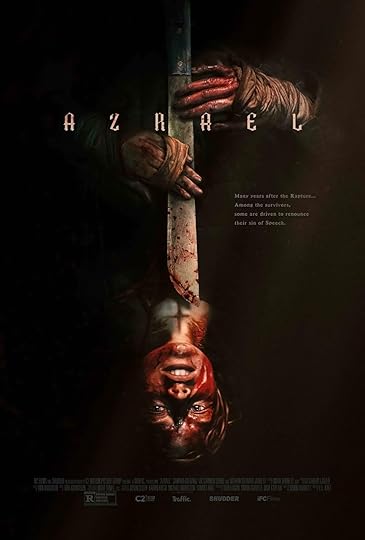
Azrael — This post-apocalyptic story takes place many years after the Rapture. Like the Antichrist, the rapture is another eschatological theme imported from religion into the horror genre. In Azrael, the remaining human survivors are hunted by the Burned Ones, humanoid creatures who are drawn to and feast upon human flesh and blood. Azrael, the protag, is driven from a forest-dwelling cult who believes that speech is a sin, and have surgically removed their own vocal cords. As a result, the film has very little dialog. After a failed attempt to sacrifice her to the Burned Ones, Azrael flees before infiltrating another camp where she encounters a makeshift church led by Miriam. After being found out, Azrael goes rogue, killing cultists and Burned Ones alike. Though the name “Azrael” has many historic meanings, in Islamic beliefs, Azrael was the only angel brave enough to come to Earth and fight the evil hordes on God’s behalf. Likewise, Azrael takes vengeance upon both cultists and the humanoid creatures they seek to appease. However, it’s the film’s climactic conclusion that makes this an important entry into the “religious horror” category. Spoiler: For here we learn that Miriam has given birth to the Antichrist. As Azrael hoists this hooved figure into the sky, the Burned Ones enter the church in order to worship the Man of Sin. Azrael’s apparent homage to the Antichrist flips the narrative on its head. But it’s this reference and the startling revelation of the protag, that make this an unusual entry. For not only are eschatological themes incorporated, but the ultimate Evil, the Antichrist, is summoned. Only in this tale, Azrael is not on the side of Good.
Nosferatu — Robert Eggers’ long awaited remake of the 1922 silent film is, like most vampire-related narratives, packed with religious themes and iconography. While Stoker’s Dracula contains numerous explicit references to Scripture and the Christian faith, Egger’s iteration of the original is more of a mixed bag. Count Orlok, the antagonist and Dracula stand-in, is unquestionably the Bad Guy. We’re told he was a “black enchanter” in life, having made a pact with the devil. Unlike the glittery Twilight bad boys or the affable socialites of the Anne Rice novels, Orlok is a manifestation of spiritual evil. He is a foul menagerie. His crypt is adorned with occult symbols. He is referenced as the devil himself. And because of this, he must be fought by spiritual means. Although Eggers sprinkles occultism, superstition, and fable along the way, when it comes to contending against Orlok, the approach is decidedly ‘Christian.’ For example, one protagonist’s life is saved in the Carpathians through the intercessory prayers and care of Orthodox nuns. They reassure him that he’s safe as long as he stays at the church, as Orlok’s evil “cannot enter this house of God.” The same man is told that he was divinely protected, and that faith remains his best defense. “Trust in God and your strength,” he is exhorted. References to Scripture and the invocation of angels from Christian and Jewish tradition are made, as are mentions of God’s grace and providence. One interesting twist has to do with science, and how it is viewed as a hindrance, not a help, to battling such undead evils. In fact, at one point Orlok leverages mankind’s growing trust in science as an aid to the implementation of his plan. While the film is beautifully shot, it includes nudity and gore. Nevertheless, in an age where Evil is sometimes glamorized (especially as relates to vampire lore), it’s good to see a story not equivocate about the Devil and retain religion as a powerful tool in overcoming him.
***
There were lots of other horror films that included a variety of religious references. Among them were, The Exorcism, Late Night with the Devil, Longlegs, Salem’s Lot, and The Front Room.



